#Constance Cherise
Text
The Authentic Allure of ALMOST FAMOUS By Constance Cherise

According to actress Nancy Olson, before filming on the set of SUNSET BLVD. (‘50) in Norma Desmond's mansion, the cameraman would rub his hands together crushing stone which created dust, then blew the dust on the camera lens, an effect, which encapsulated the ambiance of stagnant corners haunted with memories of the past. One of the most difficult tasks to execute in a retrospective period piece is to precisely immerse an audience. It takes more than vintage vehicles and costumes to fully capture the aura of an era.
Reverting to centuries ago seems an easier feat than reflecting the later years of the 20th century, perhaps because many of us can still attest to it. With most modern-day period pieces, what should be exceptional based on the subject matter alone, unfortunately resembles a costume party. A few feel-good films that readily accomplished this feat of transporting their audience include DAZED AND CONFUSED (‘93), THE SANDLOT (‘93), DETROIT ROCK CITY (‘99) and ROLL BOUNCE (2005). Although some of these films may not be hugely popular, each power-up their flux capacitor, fill the tank with plutonium and hurdle their audiences back in time.
We don't know what director/producer/screenwriter and Academy Award-winning Cameron Crowe sprinkled on his camera lens for ALMOST FAMOUS (2000, the film takes place in the ‘70s so take your pick). Still, the film, which celebrated its 20th anniversary in 2020, beams with the spirit of black lights, velvet posters, Don Kirschner’s Rock Concert and The Midnight Special performances. It would only stand to reason, as Crowe is an avid fan of classic film director Billy Wilder, director of SUNSET BLVD.
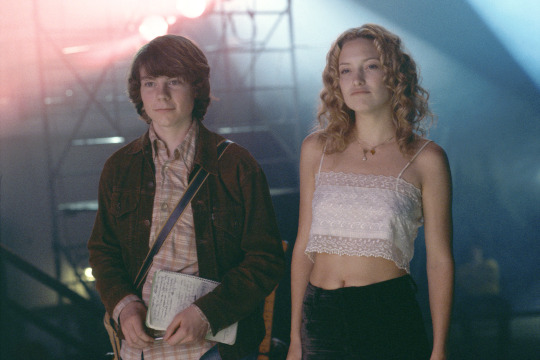
Based on Crowe’s true-life experience as a teenage reporter for Rolling Stone magazine, ALMOST FAMOUS mirrored classic film by layering the correct actors, costumes, dialogue, sets and of course an exacting soundtrack. For those of us mature enough to recall the ingrained crackle of a needle against vinyl and the scraping of a lead pencil against paper (all of us know that sound), from the opening credits, Crowe utilizes simple auditory cues and visuals powerful enough to immediately engross his audience until the film's end.
In his first feature film role, the innocence of Patrick Fugit’s portrayal is perfectly and adorably awkward. When Lester Bangs (Philip Seymour Hoffman) urges William (Fugit) “to be honest and unmerciful,” the look on William's face reveals a naive boy who is about to be eaten alive. Although not their first roles, the enchanting Kate Hudson and the fresh-faced Zooey Deschanel both shine in their breakout roles, with each demonstrating exceptional performances. And, if you ever had a doubt of which Philip Seymour Hoffman performance to watch, this may be it, or perhaps, every Philip Seymour Hoffman performance is the one to watch.
Truly, every performance in the film is exceptional. With almost half the cast being newcomers, in theory ALMOST FAMOUS should not have worked as seamlessly as it did, but according to Hudson during a recent ALMOST FAMOUS reunion, its synergy was the result of “...a magical group of people.”

Conjuring indelible memories by adeptly fusing scenes with music, ALMOST FAMOUS leaves a lasting impression on the psyche which had to be a painstaking process since creating such powerful associations means there can only be one exacting fit. If you’ve seen the film, I'd wager that every time you hear Elton John's “Tiny Dancer,” you recall a sunlit tour bus driving through cornfields with the occupants joining together in an impromptu sing-along, lending an entirely new appreciation for an old song, or if you happen to hear Brenton Wood’s “The Oogum Boogum Song” you recollect William dwarfed by boys supposedly his own age in the throes of puberty grooming themselves in a mirror. When Simon & Garfunkel’s “America” plays, we witness the exact moment a young boy converges with his future while running his fingers over newly discovered album covers as if taking them in by osmosis.
On the surface, ALMOST FAMOUS is about the once-in-a-lifetime adventure of a teenage journalist, but according to Crowe, and quite apparently, it's an endearing love letter to music. You certainly don't need to be a fan of ‘70s rock to enjoy ALMOST FAMOUS, you simply need to be a music fan period. Like revisiting an old time capsule, it’s is a film where you can easily lose yourself and even though the majority of us haven't toured with a rock’n’roll band during the ‘70s, ALMOST FAMOUS captures its journey so succinctly, hitting every note that it's difficult to convince yourself you weren't actually there. Billy Wilder would approve.
#Almost Famous#1970s#period piece#rock#Kate hudson#music#rock and roll#31 Days of Oscar#Cameron Crowe#phillip seymour hoffman#TCM#Turner Classic Movies#Constance Cherise
250 notes
·
View notes
Text
Noticias de series de la semana: Más 'The Bold Type'
Renovaciones
Freeform ha renovado Siren por una tercera temporada
Freeform ha renovado The Bold Type por una cuarta temporada
Channel 4 ha renovado Friday Night Dinner por una sexta temporada
TBS ha renovado Snowpiercer por una segunda temporada
TBS ha renovado The Last O.G. por una tercera temporada
TBS ha renovado Miracle Workers por una segunda temporada que tratará sobre un grupo de pueblerinos que intentan ser positivos durante la Edad Media.
Cancelaciones
Amazon ha cancelado The Tick tras su segunda temporada
Noticias cortas
ABC ha encargado seis episodios más de The Conners, haciendo un total de diecinueve.
Sela Ward (Dana Mosier) no estará en la segunda temporada de FBI.
Isaac Keys (Ed) será regular en la tercera temporada de Get Shorty.
La segunda temporada de Dirty John pasa de emitirse de Bravo a USA Network.
Incorporaciones y fichajes
Sarah Paulson (American Horror Story, Studio 60), Uzo Aduba (Orange Is the New Black), Rose Byrne (Damages, Bridesmaids), James Marsden (Westworld, X-Men), Margo Martindale (The Americans, The Good Wife), John Slattery (Mad Men, Desperate Housewives), Jeanne Tripplehorn (Big Love, Basic Instinct), Tracey Ullman (The Tracey Ullman Show), Melanie Lynskey (Two and a Half Men, Castle Rock), Ari Graynor (I'm Dying Up Here, Fringe) y Kayli Carter (Godless) se unen a Cate Blanchett en Mrs. America. Serán Alice (personaje ficticio), Shirley Chisholm, Gloria Steinem, Phil Crane, Bella Abzug, Fred Schlafly, Eleanor Schlafly, Betty Friedan, Rosemary Thomson, Brenda Feigen-Fasteau y Pamela (personaje ficticio). Alice y Pamela son miembros del movimiento anti-ERA.
Sharon Stone (Basic Instinct, Casino) y Marilyn Manson (Salem, Sons of Anarchy) estarán en The New Pope. Se desconocen detalles.
Constance Zimmer (UnREAL, House of Cards), Toby Leonard Moore (Billions, Daredevil), Rose Rollins (The L Word, The Catch), Isidora Goreshter (Shameless), Eric Johnson (Vikings, The Knick), Alexei Bondar (The Americans) y Jonathan Kells Phillips se unen a la segunda temporada de Condor.
Tricia Helfer (Battlestar Galactica, Lucifer) será Dracula en la cuarta temporada de Van Helsing.
Da'Vine Joy Randolph (People of Earth, Empire) y David H. Holmes se unen como regulares a High Fidelity. Serán Cherise y Simon, trabajadores de la tienda de Rob (Zoë Kravitz).
Pósters
Nuevas series
TBS encarga diez episodios de Chad, comedia creada, escrita, producida y protagonizada por Nasim Pedrad (Scream Queens, Saturday Night Live), que interpretará a un adolescente persa que trata de encajar y de reconciliarse con su identidad cultural. Su piloto fue descartado en 2016.
Amazon encarga Panic, adaptación de la novela de Lauren Oliver (2014) por ella misma, sobre un pequeño pueblo estadounidense en el que cada año los graduados universitarios compiten para escapar de allí. Con Olivia Welch (), Mike Faist (), Ray Nicholson () y Will Chase (Nashville, Sharp Objects).
Netflix encarga The Magic Order, adaptación de la novela gráfica de Mark Millar (2018) en la que cinco familias de magos que juraron proteger el mundo, y por el día viven entre nosotros como vecinos, amigos o compañeros de trabajo, deben combatir a un enemigo que los está eliminando uno a uno. Dirigida y producida por James Wan (Saw, Aquaman) y escrita y producida por Lindsey Beer (Sierra Burgess is a Loser, Chaos Walking).
Cate Blanchett (Blue Jasmine, The Aviator), Yvonne Strahovski (The Handmaid's Tale, Dexter) y Dominic West (The Affair, The Wire) protagonizarán Stateless, miniserie de la ABC australiana centrada en cuatro extraños retenidos en un centro de detención de inmigrantes en el desierto australiano: una azafata de vuelo que escapa de una secta, un refugiado afgano, un padre australiano joven que escapa de un trabajo sin futuro y burócrata atrapado en un escándalo nacional. Completan el reparto Jai Courtney, Asher Keddie, Fayssal Bazzi, Rachel House, Kate Box, Clarence Ryan, Claude Jabbour, Rose Riley y Helana Sawires. Creada por Blanchett, Tony Ayres (Glitch, Nowhere Boys) y Elise McCredie (Jack Irish, Sunshine), escrita por McCredie y Belinda Chayko (Secret City, Safe Harbour) y dirigida por Emma Freeman (Glitch, Secret City) y Jocelyn Moorhouse (A Thousand Acres, The Dressmaker). Producida por Blanchett y su marido. Seis episodios.
AMC encarga seis episodios de una antología sobre la intersección del amor y la ciencia. Creada y escrita por Will Bridges (Black Mirror, Stranger Things) y Brett Goldstein (Superbob), contará una historia distinta en cada episodio pero todas ambientadas dentro de quince años, cuando la ciencia ha hecho un descubrimiento que cambia la vida de todo el planeta: una forma de encontrar a tu alma gemela.
BBC Two ha encargado dos episodios de Salisbury, drama basado en los envenenamientos por un gas ruso en Salisbury en 2018. Escrito por Adam Patterson y Declan Lawn.
Fechas
La quinta temporada de Black Mirror llega a Netflix el 5 de junio
Jett se estrena en Cinemax el 14 de junio
La tercera temporada de Paquita Salas llega a Netflix el 28 de junio
South Side se estrena en Comedy Central el 24 de julio
La segunda temporada de Disenchantment llega a Netflix el 20 de septiembre
El regreso de Siren se adelanta del 11 de julio al 13 de junio
Tráilers y promos
What/If
youtube
Party of Five
youtube
Motherland: Fort Salem
youtube
Everything's Gonna Be Okay
youtube
3% - Temporada 3
youtube
Chad
youtube
Younger - Temporada 6
youtube
Pose - Temporada 2
youtube
Strange Angel - Temporada 2
youtube
Jett
youtube
Temple
youtube
1 note
·
View note
Text
The Spirit of SPARKLE By Constance Cherise

A precursor to the Broadway musical Dreamgirls, SPARKLE (‘76), a film about three young Black sisters in late-1950s Harlem with dreams of stardom, is commonly believed to be loosely based on the story of The Supremes (rest easy Mary Wilson). Like THE WIZ (‘78), initially, SPARKLE did not do well in the box office, and like THE WIZ, it also became a classic Black film garnering fan loyalty. If the sizzling 1992 rendition of “Giving Him Something He Can Feel” by En Vogue wasn’t proof enough of its endurance, the 2012 remake of SPARKLE (tragically Whitney Houston's final film) should be sufficient evidence.
Directed by Sam O’Steen, with music by ‘70s producer extraordinaire Curtis Mayfield, SPARKLE shares notable ties to classic film. One of its screenwriters, Joel Schumacher, whose extensive portfolio includes the film adaptation of THE WIZ, noted Billy Wilder as his favorite director. In a 2010 interview, Schumacher recalled a mischievous youth, watching black-and-white films in a theater near his home. “I was watching the Golden Era of Hollywood...watching Elia Kazan and John Ford and Alfred Hitchcock, I could go on…” Schumacher stated. Although Robert Stigwood is not credited on screen as the producer, the film was made under the banner of his production company. The all-around entertainment impresario, called by Newsweek “the Ziegfeld of the disco age,” also released the everlasting SATURDAY NIGHT FEVER (‘77), GREASE (‘78) and SGT. PEPPER’S LONELY HEARTS CLUB BAND (‘78).
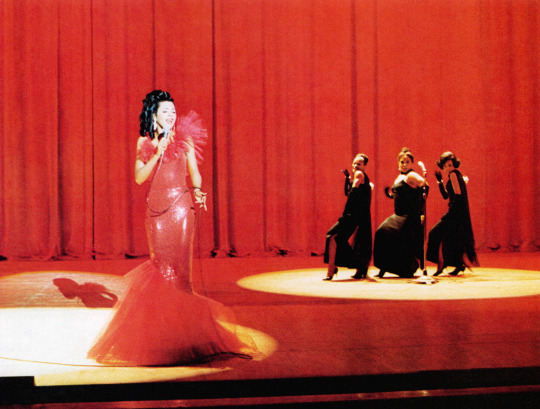
Another Classic Hollywood tie is Lonette McKee, who portrays Sister. McKee had her breakout role in 1983 as the first mixed-race woman to portray Julie, starring alongside Donald O’Connor, in her Tony-nominated performance of the Broadway musical Showboat. The character was previously depicted by white actresses, most famously Ava Gardner, who won the role over her best friend Lena Horne in MGM’s 1951 film. The decision was made by the studio due to Horne’s race, which she maintained cut her deeply. If you haven’t seen Horne’s rendition of “Can't Help Lovin’ Dat Man,” in TILL THE CLOUDS ROLL BY (1946), watch it and you will understand Horne’s justified frustration.
Although SPARKLE is a story about three sisters—Sparkle, Sister and Delores—and their short-lived rise to fame, the catalyst of the tension in the story truly begins with Sister (McKee). Well aware of her unique beauty, she becomes involved with Satin (Tony King), whose focused attention towards her further inflates her ego cause her to not see him for who he truly is: an abuser and gangster. He openly engages Sister with another woman at his side, and Sister witnesses him punch this woman in the stomach and pull the fur coat from her back. Yet Sister’s reaction seems to be more of excited intrigue. In that moment of silent acceptance, she seals her fate. Not only is it apparent this cannot possibly end well, the resulting repercussions on her and those who truly love her soon come into grave focus.
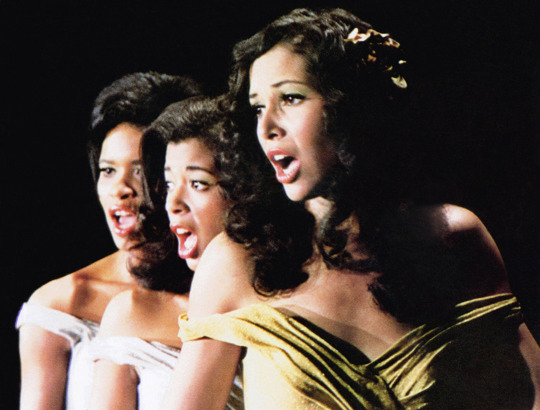
In the scene where Satin is introduced to Effie (Tony Award-winning Mary Alice), the mother of the three hopeful sisters, and sits beside her, Effie’s expressionless glare takes over, all her years of wisdom instantaneously coming to the surface. Everything Satin is flashes in Effie’s eyes. Instinctively, Effie knows – and Satin knows she knows – that Sister is headed in the wrong direction. When Effie arrives backstage to congratulate her daughters after a successful show, she straight-talks Sister, cradling her face, looking into her eyes almost as a lover. With precise articulation, she tries to ensure her daughter comprehends her words of wisdom.
“I’ve lived in Harlem all my life. I do know a rat when I see one.”
Considering Effie’s domestic employment, when her white employer notices her sullen mood and states that she hopes Effie considers her “enough of a friend to confide in,” there are multiple takeaways. We can conclude that Effie’s employer is wholly oblivious to her authentic identity and her role as a maid, and we get a snapshot of Effie’s sacrifice for her daughters. Powerfully poignant, Alice's performance embodies a silent strength present in many of her performances. As she quietly endures the deconstruction of her family, you have to wonder about the substantial weight she holds within.
A youthful Phillip Michael Thomas is as gorgeous and equally as captivating in SPARKLE as he was during his days of palm trees, Miami pastels and pink flamingos, portraying the character Ricardo Tubbs in the TV series Miami Vice. Although the film’s main characters are all beautiful women, you simply cannot take your eyes away from him; when Thomas is in the scene, he steals it every time.

Most famous for her role as Coco in the film FAME (’80), which caused a measurable rise in attendance at performing arts schools internationally, Irene Cara’s career began at the tender age of 3. She was only 13 years old when she played Sparkle, but her performance is so spectacular, she competently rivals her elder co-stars. In a role that could easily escalate to excessiveness, Cara underplays. Her scene with Thomas, after a funeral, is a perfect example. Years in the entertainment industry expertly result in a stellar performance.
With a time-capsule quality much like other Stigwood films, SPARKLE seems like two separate yet cohesive stories – a tragedy that is unexpectedly a comforting diversion. In the end, the abiding spirit of SPARKLE satisfies.
#Sparkle#Fame#Lonette McKee#The Wiz#Dreamgirls#Supremes#Irene Cara#Lena Horne#MGM#TCM#Turner Classic Movies#Constance Cherise
242 notes
·
View notes
Text
Reframing Films of the Past: An Interview with TCM Writers

All month long in March, TCM will be taking a look at a number of beloved classic films that have stood the test of time, but when viewed by contemporary standards, certain aspects of these films are troubling and problematic. During TCM’s Reframed: Classics in the Rearview Mirror programming, all five TCM hosts will appear on the network to discuss these issues, their historical and cultural context and how we can keep the legacy of great films alive for future generations.
Also joining in on this conversation are four TCM writers who were open enough to share their thoughts on their love of classic movies and watching troubling images of the past. Special thanks to Theresa Brown, Constance Cherise, Susan King and Kim Luperi for taking part in this conversation. Continue the conversation over on TCM’s Twitter.
What do you say to people who don’t like classics because they’re racist and sexist?
KL: There are positive representations in classic Hollywood that I think would blow some peoples’ minds. I always love introducing people to new titles that challenge expectations.
That said, anyone who broadly slaps a sexist or racist label on a large part of the medium’s history does a disservice to cinema and themselves. That mindset keeps them ignorant not only of some excellent movies and groundbreaking innovation but history itself.
I think people need to remember that movies are a product of their time and they can reflect the society they were made into a variety of degrees - good, bad, politically, culturally, socially. That’s not to excuse racism or sexism; it needs to be recognized and called out as such for us to contend with it today. But it’s important for people who say they don’t like classics for those reasons to understand the historical context. In particular, we need to acknowledge that society has evolved - and what was deemed socially acceptable at times has, too, even if sexism and racism are always wrong - and we are applying a modern lens to these films that come with the benefit of decades worth of activism, growth and education.
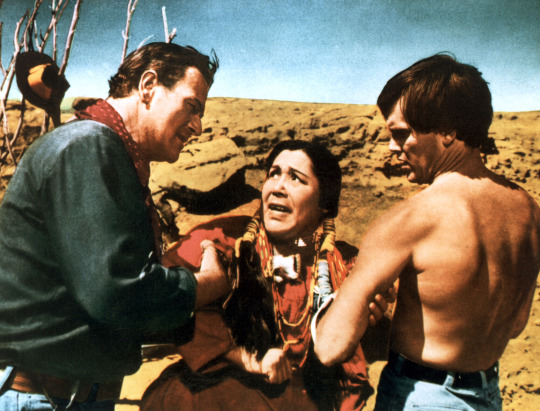
SK: I totally agree K.L. For years I have been encouraging people to watch vintage movies who keep proclaiming they don’t like black-and-white films or silent films. For every Birth of a Nation (1915) there are beautiful dramas, wonderful comedies and delicious mysteries and film noirs.
These films that have racist and sexist elements shouldn’t be collectively swept under the rug, because as K.L. stated they shine a light on what society was like – both good and bad.
CC: First off, fellow writers may I say, I think your work is amazing. I'm continually learning from the talent that is here, and I am humbled to be a part of this particular company. Similar to the prior answers, for every racist/sexist film the opposite exists. Personally, classic musicals attracted me due to their visual assault, creativity and their unmistakable triple-threat performances. While we cannot ignore racist stereotypes and sexism, there are films that simply are "fantasies of art." There is also a review of evolution. In 20 years, what we now deem as acceptable behavior/conversation will be thought of as outdated and will also require being put into "historical context." What we collectively said/thought/did 20 years ago, we are currently either re-adjusting or reckoning with now, and that is a truth of life that will never change. We will always evolve.
TB: I would say to them they should consider the times the movie was made in. It was a whole different mindset back then.
Are there movies that you love but are hesitant to recommend to others because of problematic elements in them? If so, which movies?
TB: Yes, there are movies I’m hesitant to recommend. The big one, off the top of my head, would be Gone With the Wind (1939). The whole slavery thing is a bit of a sticky wicket for people, especially Black folks. Me, I love the movie. It is truly a monumental feat of filmmaking for 1939. I’m not saying I’m happy with the depiction of African Americans in that film. I recognize the issues. But when I look at a classic film, I suppose I find I have to compartmentalize things. I tend to gravitate on the humanity of a character I can relate to.
KL: Synthetic Sin (1929), a long thought lost film, was found in the 2010s, and I saw it at Cinecon a few years ago. As a Colleen Moore fan, I thoroughly enjoyed most of it, but it contains a scene of her performing in blackface that doesn’t add anything to the plot. That decision brings the movie down in my memory, which is why I have trouble recommending it.
Also Smarty (1934), starring Warren William and Joan Blondell, is another movie I don’t recommend because it’s basically about spousal abuse played for comedy, and it did not age well for that reason.
SK: Breakfast at Tiffany’s (1961): Audrey Hepburn is my favorite actress and I love her Oscar-nominated performance as Holly. I adore Orangy as Cat, as well as George Peppard and Buddy Ebsen, who is wonderfully endearing. And of course, “Moon River” makes me cry whenever I hear it. But then I cringe and am practically nauseous every time Mickey Rooney pops up on screen with his disgusting stereotypical performance as Holly’s Japanese landlord Mr. Yunioshi. What was director Blake Edwards thinking casting him in this part? Perhaps because he’s such a caricature no Japanese actor wanted to play him, so he cast Rooney with whom he had worked within the 1950s.
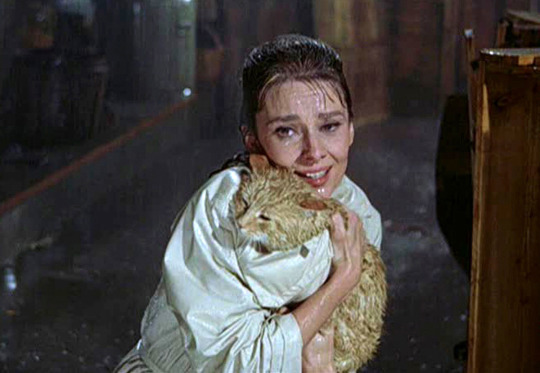
CC: I cannot necessarily state that I am in "love," but, a film that comes to mind would be Anna and the King of Siam (1946). It is an absolutely beautiful visual film. However, Rex Harrison as King Mongkut requires some explanation.
Holiday Inn (1942), and the Abraham number...why??? Might I also add, there were many jaw-dropping, racist cartoons.
How did you learn to deal with the negative images of the past?
KL: I often look at it as a learning experience. Negative images can provoke much-needed conversation (internally or with others) and for me, they often prompt my education in an area that I wasn’t well versed in. For instance, blackface is featured in some classic films, and its history is something I never knew much about. That said, seeing its use in movies prompted me to do some research, which led me first to TCM’s short documentary about blackface and Hollywood. I love how TCM strives to provide context and seeks to educate viewers on uncomfortable, contentious subjects so we can appreciate classic films while still acknowledging and understanding the history and the harmful stereotypes some perpetuated.
SK: It’s also been a learning experience for me. Though I started watching movies as a little girl in the late 1950s, thanks to TCM and Warner Archive I realized that a lot of films were taken out of circulation because of racist elements. TCM has not only screened a lot of these films but they have accompanied the movies with conversations exploring the stereotypes in the films.
CC: As a Black woman, negative images of the past continue to be a lesson on how Blacks, as well as other minorities, were seen (and in some cases still are seen) through an accepted mainstream American lens. On one hand, it's true, during the depiction of these films the majority of Black Americans were truly relegated to servant roles, so it stands to reason that depictions of Black America would be within the same vein. What is triggering to me, are demeaning roles, and the constant exaggeration of the slow-minded stereotype, blackface. When you look at the glass ceiling that minority performers faced from those in power, the need for suppression and domination is transparent because art can be a powerful agent of change. I dealt with the negative images of the past by knowing and understanding that the depiction being given to me was someone else's narrative, of who they thought I was, not who I actually am.
TB: I’m not sure HOW I learned to deal with negative images. Again, I think it might go back to me compartmentalizing.
I don’t know if this is right or wrong…but I’ve always found myself identifying with the leads and their struggles. As a human being, I can certainly identify with losing a romantic partner, money troubles, losing a job…no matter the ethnicity.
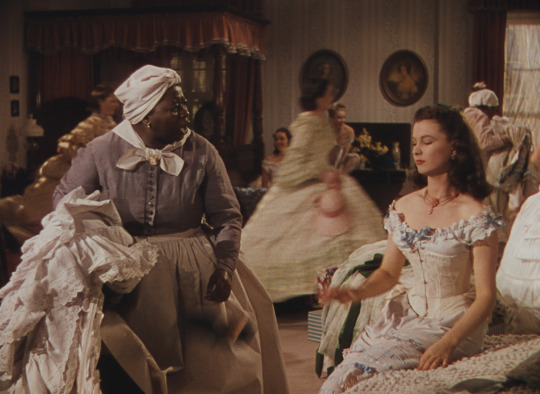
In what ways have we evolved from the movies of the classic era?
KL: I think we are more socially and culturally conscious now when it comes to stories, diversity and representation on screen and behind the scenes, which is a step forward. That said, while there's been growth, there's still much work to be done.
SK: I think this year’s crop of awards contenders show how things have evolved with Da 5 Bloods, Soul, One Night in Miami, Minari, Ma Rainey’s Black Bottom, The United States Vs. Billie Holiday, Judas and the Black Messiah and MLK/FBI.
But we still have a long way to go. I’d love to see more Native American representation in feature films; more Asian-American and Latino stories.
CC: There are minority artists, writers, producers, directors, actors with the increasing capacity to create through their own authentic voice, thereby affecting the world, and a measurable amount of them are women! Generally speaking, filmmakers (usually male) have held the voice of the minority narrative as well as the female narrative. I agree with both writers above in the thought that it is progress, and I also agree, more stories of diversified races are needed.
TB: One important way we've evolved from the movies made in the classic era by being more inclusive in casting.
Are there any deal-breakers for you when watching a movie, regardless of the era, that make it hard to watch?
KL: Physical violence in romantic relationships that's played as comedy is pretty much a dealbreaker for me. I mentioned above that I don't recommend Smarty (1934) to people, because when I finally watched it recently, it. was. tough. The way their abuse was painted as part of their relationship just didn’t sit well with me.

SK: Extreme racist elements and just as KL states physical violence.
Regarding extreme racist elements, D.W. Griffith’s Birth of a Nation (1915) is just too horrific to watch. I was sickened when I saw it when I was in grad school at USC 44 years ago and it’s only gotten worse. And then there’s also Wonder Bar (1934), the pre-code Al Jolson movie that features the Busby Berkeley black minstrel number “Goin’ to Heaven on a Mule.” Disgusting.
I also agree with KL about physical violence in comedies and even dramas. I recently revisited Private Lives (1931) with Norma Shearer and Robert Montgomery based on Noel Coward’s hit play. I have fond memories of seeing Maggie Smith in person in the play when I was 20 in the play and less than fond memories of watching Joan Collins destroying Coward’s bon mots.
But watching the movie again, you realized just how physically violent Amanda and Elyot’s relationship is-they are always talking about committing physical violence-”we were like two violent acids bubbling about in a nasty little matrimonial battle”; “certain women should be struck regularly, like gongs”-or constantly screaming and throwing things.
There is nothing funny or romantic about this.
KL: I try to put Birth of a Nation out of my mind, but S.K. did remind me of it again, and movies featuring extreme racism at their core like that are also dealbreakers; I totally agree with her assessment. I understand the technological achievements, but I think in the long run, especially in how it helped revive the KKK, the social harm that film brought about outdoes its cinematic innovations.
CC: Like S.K., Wonder Bar immediately came to mind. Excessive acts of violence, such as in the film Natural Born Killers (1994). I walked out of the theatre while the film was still playing. I expected violence, but the gratuitousness was just too much for me. I also have an issue with physical abuse, towards women and children. This is not to say I would not feel the same way about a man. However, when males are involved, it tends to be a fight, an exchange of physical energy, generally speaking, when we see physical abuse it is perpetuated towards women and children.
TB: I have a couple of moments that pinch my heart when I watch a movie. It doesn’t mean I won’t watch the movie. It just means I roll my eyes…verrrrry hard.
-Blackface…that’s a little rough; especially when the time period OF the movie is the ‘30s or ‘40s film.
-Not giving the Black actors a real name to be called by in the film (Snowflake…Belvedere…Lightnin’). I mean, can’t they have a regular name like Debbie or Bob?
-When the actor can’t do the simplest of tasks, i.e. Butterfly McQueen answering the phone in Mildred Pierce (1945) and not knowing which end to speak into. What up with that?

Are there elements they got right that we still haven’t caught up to?
KL: I don't know if the pre-Code era got sex right (and sensationalism was definitely something studios were going for) but in some ways, I feel that subject was treated as somewhat more accepted and natural back then. Of course, what was shown onscreen in the classic era was nowhere near the extent it is today, but the way the Production Code put a lid on sex (in addition to many other factors) once again made it into more of a taboo topic than it is or should be.
One thing I particularly hate in modern movies is gratuitous violence, and it perplexes and angers me how America weighs violence vs. sex in general through the modern ratings system: films are more likely to get a pass with violence, mostly landing in PG-13 territory and thus making them more socially acceptable, while sex, something natural, is shunned with strictly R ratings. Obviously, there are limits for both, but I think the general thinking there is backwards today.
CC: The elegance, the sophistication, the precision, the dialogue, the intelligence, the wit. The fashion! The layering of craftsmanship. We aren't fans of these films for fleeting reasons, we are fans because of their timeless qualities.
I'm going to sound like a sentimental sap here, ladies get ready. I think they got the institution of family right. Yes, I do lean towards MGM films, so I am coloring my opinion from that perspective. Even if a person hasn't experienced what would have been considered a "traditional family" there is something to be said about witnessing that example. Perhaps not so much of a father and a mother, but to witness a balanced, functioning, loving relationship. What it "looks like" when a father/mother/brother/sister etc. genuinely loves another family member.
I was part of the latch-key generation, and although my parents remained together, many of my friends' parents were divorced. Most won't admit it, but by the reaction to the documentary [Won't You Be My Neighbor?, 2018], the bulk of them went home, sat in front of the TV and watched Mr. Rogers tell them how special they were because their parents certainly were not. We don't know what can "be" unless we see it.
#Reframed#TCM#Turner Classic Movies#representation#racism#sexism#inclusion#diversity#cinephile#film#old Hollywood#Theresa Brown#Kim Luperi#Susan King#Constance Cherise
110 notes
·
View notes
Text
A Lesson in the Art of Manipulation By Constance Cherise

I had previously only seen bits and pieces of GASLIGHT (‘44) but given the wide circulation of its psychological derivative “gaslighting,” I recently decided this was a film I needed to watch in its entirety. The ideal example of the methodical deconstruction of one's psyche, GASLIGHT becomes a playbook example for understanding the cues of manipulation. As an individual old enough to have had my natural portion of critical life lessons, I felt it would be a meaningful movie to share with a younger generation.
I introduced my niece to classic films years prior while she was a teenager. We’ve watched enough films together to pique her curiosity as well as gain her trust in my selections, but as life got in the way, eventually our movie time dwindled. With her now entering her 20s, GASLIGHT offered the perspective of a detached observer. While overt acts were immediately apparent, what ultimately resulted was a lesson in the recognition of intuitive prompts.
While witnessing the unraveling of the main character, Paula (Ingrid Bergman in her first Oscar-winning role), I found myself reacting to GASLIGHT in a way I rarely behave when watching classic movies – by audibly responding to the screen. However, when my niece had the same reactions, in relatively the same spots, I chalked it up to either the fact that...well... she is my niece, or this is simply the effect of this film. Love bombing control cloaked as romance, gaining trust while feeding fear, repeated lies that eventually mask themselves as the truth and a bit of jealousy to top it off, are all earmarks of a toxic union well worth discussing.

Our watching of the film eventually became a volley session. We would pause and rewind at distinct spots to point out the exact moment of engineered pivots, noting a telling reaction, sharing insightful observance or asking inquisitive questions. The warning signs are visually present, but because they begin subtly, by default, an individual who is unaware of manipulations is blind to the coming repercussions that follow. It’s something the majority of us have experienced in some form that becomes blatant only in hindsight. Most of my niece's awareness began as an uneasy “feeling,” as she was not precisely certain of what was happening that was wrong, but nonetheless something was wrong.
Naturally, the manipulation begins when Gregory (Oscar-nominated Charles Boyer) hastily discusses marriage with Paula after a two-week courtship. We assume this is Paula’s first serious relationship given the historical timeframe. While Paula is obviously enchanted, her logic has stepped in to allow herself an arm’s length distance from her lover when she decides to take a trip alone to make a proper decision. The mere fact that Gregory is wholly aware that he cannot allow Paula to be alone for fear that her greater mind might speak truth propels him to an aggressive pursuit, even though he uses no outwardly apparent aggressive tactics. Of course the resounding question to his need for expediency is...why? Innately, Paula had enough wisdom to know she required solitude to contemplate further, but through Gregory’s consuming distraction of romance, Paula’s own inner voice is overshadowed.

Eventually Gregory wields such great power over Paula that even after direct degradation, his sudden change of posture releases an abnormal overwhelming joy in his wife. One of his most nefarious gestures, outside of convincing Paula of her insanity, is in hiring the young tart housemaid, Nancy (Angela Lansbury, also Oscar nominated), who is clearly attracted to Gregory and is used as a competitive pawn to further exert command over his new wife. It wasn’t until towards the end of the film, I revealed that Nancy was the star of the television show, Murder She Wrote, which was met with the typical, “I knew she looked familiar!” The remainder of the film is a series of mental deteriorations. Given the typical response of the majority of wives in classic films when their husbands drastically falter (not in all films), I was unexpectedly surprised with the climax of GASLIGHT. While my niece thoroughly enjoyed the film, and also decided to share it with a friend, like many, she felt Gregory’s end should have been met with harsher consequences.
Truth be told, GASLIGHT can open multiple avenues of discussion, most directly an example on how not to be manipulated...or how to manipulate. It simply depends on what side of the fence you choose to be on. But the lesson that became greater while we watched the film together was capturing the imperative pinpoint moments, when without physical proof or logic that sixth sense subtly kicks in, indicating when motives are implicitly wrong or when they are decisively right.
#Gaslight#gaslighting#psychology#manipulation#Ingrid Bergman#Charles Boyer#Angela Lansbury#intuition#TCM#Turner Classic Movies#Constance Cherise
199 notes
·
View notes
Text
The Makers and the Breakers: The Hollywood Studio System By Constance Cherise
From anecdotal tales to darker narratives of downright malevolence, movies about the Hollywood studio system are as prevalent as the subject is understandably intriguing. Films like A STAR IS BORN (‘54), THE BAD AND THE BEAUTIFUL (‘52) and, just for a bit of naughty camp, DAISY CLOVER (‘65), to name a few, all allow a voyeuristic gaze behind an enchanted curtain. The major Hollywood studios controlled all aspects of filmmaking, distribution and the lives and appeal of their stars.
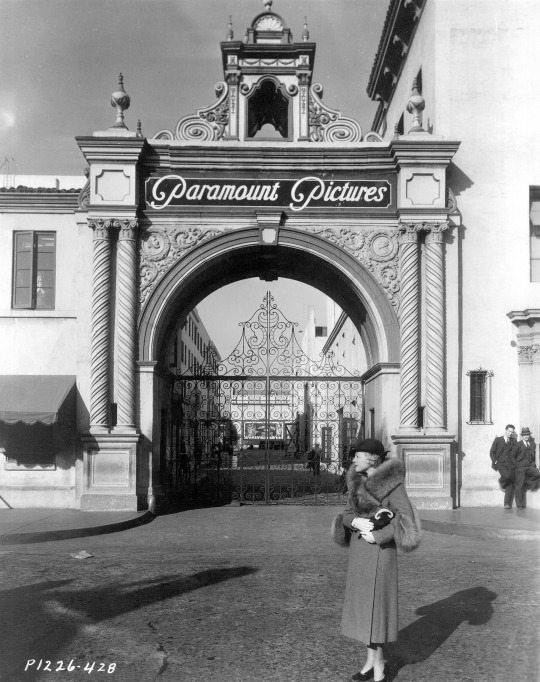
A studio executive’s expertise was to home in on the "It" factor of an actor. Then the build-up of publicity would begin. A well-engineered system of perfectly timed pulleys and cranks, bells and whistles would turn, and it didn't matter whether stories about a star were the truth, embellishment or lies, from the studios perspective stars weren't actual people, they were commodities that were bought, sold, traded and used as pawns to the benefit of the studio system. (A thorough reference on this is Jeanine Basinger’s The Star Machine) But, if anyone had ill feelings about their treatment, only those that were the most daring spoke up. The cliché “You'll never work in this town again” wasn't just a catchphrase, it was wholly and utterly true. Speaking up too loudly about one's gilded cage could end a career faster than Eleanor Powell’s “machine gun” tap dancing. As quickly as the mechanism could build a pretty face to stardom, it could just as easily grind to a halt, meticulously dismantling at record speed.
The true genius of the studio system was its innate and pristine ability to create a persona around the most capable assets that their commodity had to offer. An exceptional dancer with buck teeth? No problem. Send her to the dentist for cosmetic surgery. A heartthrob of a man who was too short? No problem. Elevate his shoes and make sure his counterpart wasn't wearing heels. A knockout beauty who could dance but was too ethnic-looking? Change her hair color from jet black to red, perform electrolysis on her hairline, add luscious waves, put her on a diet and change her name from Margarita Carmen Cansino to Columbia Picture’s own Rita Hayworth.

The system found what was innately undeniable, played up the strengths and buffed, polished or cleverly disguise the flaws, a process still happening in media. But the studio system of the Golden Age was far-reaching. Its governance traveled beyond its inner sanctum into affecting contractors' personal lives. A moral clause was a standard part of an actors’ contract. Both law enforcement and mobsters were part of the studio’s payroll, a necessary tactic thought to keep its stars in line and to protect the industry's overall reputation. If a star found themselves in a compromising position, there was always a hired hand, such as in the case of MGM's Eddie Mannix, to respond, repair and refute, regardless of the cost. Studios further exerted control by means of inclusivity. By creating an insular studio with every conceivable notion at their fingertips, including health facilities and a police force (as was present at MGM), the studio system was privy to inside information by way of design and therefore able to thwart potential problems sooner rather than later.
Opinions amongst stars who were part of the system varied. Some found it confining and artistically stifling (United Artists was created as a direct result of the burgeoning studio system in 1919), while others enjoyed its protective embrace. Fred Astaire was not a particularly handsome man, but his virtuoso skill of dance was undeniable. By the time he made it to Tinseltown, he had already been a star on the stage and his elegant persona was well polished. Almost the same could be said for Gene Kelly, except that Kelly was quite handsome with his all-American chiseled features and athletic body. He too came to Hollywood bearing Broadway accolades. Anything else either star may have required was worth any level of contribution on the part of the studio. But most stars didn't come fully assembled.
youtube
Numerous classic musical fans are aware of actor and untrained dancer Debbie Reynolds’ account of bloodied feet while rehearsing “Good Morning'' for the film SINGING IN THE RAIN (‘52), a story she confirmed in a TCM interview with late host Robert Osborne. Reynolds would star in multiple roles where dance was required, and for someone who was not a professional, with training from expert choreographers, she fooled us all. Ava Gardner did not go looking for the fame that found her. She was discovered through a photo in a shop window. The daughter of sharecroppers, Gardner had no experience in acting to speak of, and in fact, had a free-spirited reputation of reluctance. She had to be trained out of her deep southern accent, but her naturally stunning features combined with her charm literally smoldered the camera.
For all the contract players who willingly or unwillingly accepted the exploitation of their assets, there were those few who refused to play by studio rules. One not to cower was Mae West, who solidified her autonomy by demanding and receiving one dollar more than the head of Paramount, Adolph Zuckor, as well as full script approval of her films. MGM’s Luise Rainer, after becoming the first woman to consecutively win two Academy Awards, turned her back on Hollywood due to its iron grip. "I did not like the superficial life that one is naturally forced at times to live,” Rainer stated in a TCM interview. William Haines, one time voted as America's top male star, refused to hide his homosexuality living an open life with his lover, defying the orders of traditional marriage by Louis B. Mayer and as a result was fired from MGM.
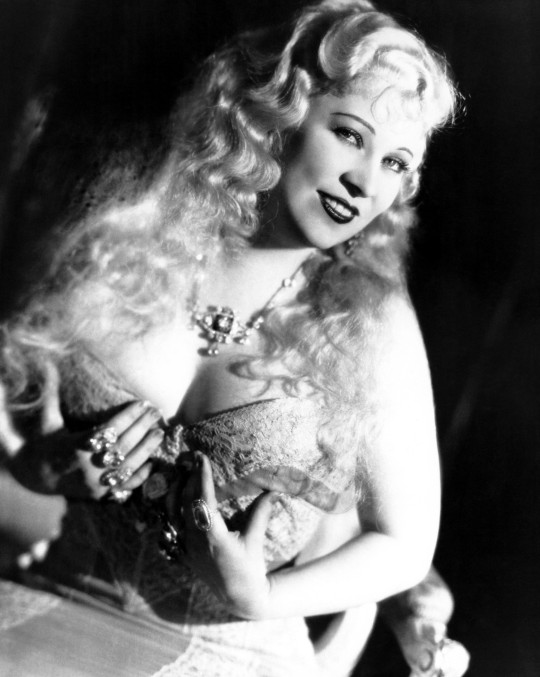
That's what the studio system did: take an inarguable asset, create an inflated persona around it, smooth the dents, add a little extra padding where necessary and package it to be received exactly how they envisioned for public consumption...or...destroy it. After all, with over 70% of Americans attending film theaters at least once a week, the public turned the film industry into a multi-million-dollar business during its Golden Age when the average price of a ticket was 25 cents. Studios were readily aware they held the power and used it skillfully to full advantage.
The studio systems tactics could easily be viewed as a calculated sleight of hand, however, it unequivocally delivered, and its final product was polished, pristine and precise. But for those that were plucked from obscurity, was it truly a sleight of hand? One could argue that you can't get blood from a stone, and if that statement is true, the studio’s techniques of engineered transformation couldn't possibly invoke aptitude that didn't already exist somewhere within, however miniscule. Perhaps, instead of the credit studio’s retained for creating stars, its genuine function was to awaken exceptional latent potential that was simply waiting to be discovered.
#Old Hollywood#Hollywood studios#Golden Age Hollywood#star system#MGM#Columbia#Mae West#Rita Hayworth#Fred Astaire#TCM#Turner Classic Movies#paramount pictures#Constance Cherise
137 notes
·
View notes
Text
My Time with Doris Day: An Interview with Mary Anne Barothy By Constance Cherise

In 2012, Robert Osborne interviewed a spry 90-year-old, Doris Day. He, of course, asked all the correct questions a true Day fan would be curious about: when she realized she could sing, how her career in film began and did she consider her serendipitous life to be destiny. A vibrant and gracious Day revealed that she wasn’t nervous when it came to performing, and if you have seen her first film ROMANCE ON THE HIGH SEAS (‘48), her organic ease fits like the exact correct puzzle piece.
Although she passed almost two years ago, fans the world over still celebrate her iconic status. One of those fans is a public speaker on all things Doris, author of Day at a Time: An Indiana Girl's Sentimental Journey to Doris Day's Hollywood and Beyond, Mary Anne Barothy. Her fortune ironically played out like a classic Hollywood script, much like the beginnings of Day’s career. A devotee of Day since childhood, threads of fate connected and Barothy would find herself rubbing shoulders with Hollywood's elite, astonishingly becoming Day’s live-in secretary, maintaining an active friendship from 1967-1974.
What was a typical day with Doris like?
Mary Anne Barothy: I lived with Doris in her Beverly Hills home after her TV show [The Doris Day Show] filming ended - December 1972 and ran through June of 1973 on CBS. Her bedroom was just opposite mine in the back. Mine was the front bedroom. She slept with seven of her dogs, and I slept with the other four – Bobo, Charlie, Rudy and Schatzie. She would get up and come into the kitchen where I often fixed her breakfast. Doris loved her dogs and spent time playing with them both indoors and out. Many days she would get ready and bike down to Nate 'N Al's Deli for a late breakfast and many times would meet someone, or we would go together for breakfast. Doris loved her fans, and she was very good about answering her fan mail.
As you know, her passion was animal welfare and she kept up with Actors & Others for Animals and frequently attended board meetings. I went with her and was also a proud member of Actors & Others for Animals. In the summer she would swim in her pool on occasion. She would call friends and once in a while meet someone for lunch or dinner. After dinner, sometimes we would sit in one section of her living room and watch the news. Doris was very down to earth; as I said, she was like a big sister to me. To me, this was an incredible dream come true! It is still hard to believe that I had this awesome opportunity to spend precious time with my idol, Doris Day!
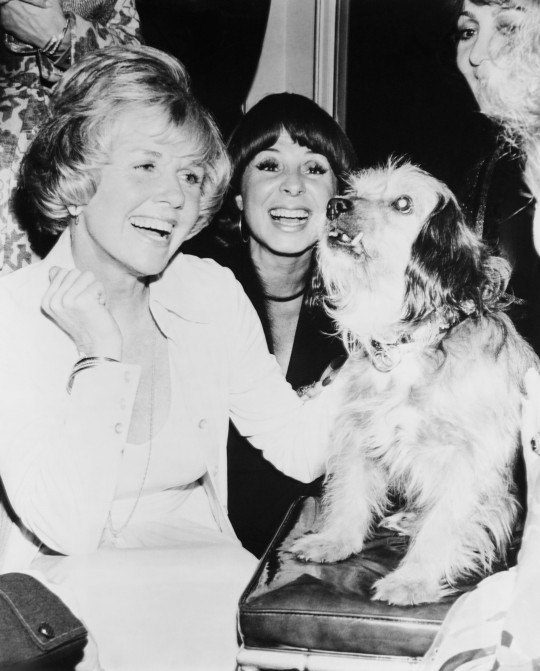
The designer Irene dressed her in high fashion. Did she have a favorite costume/gown?
MB: She never spoke about that, but she looked good in a bathrobe. She just had a way of radiating, looking beautiful no matter what she had on. She always said CALAMITY JANE [‘53] was her favorite movie because she was kind of a tomboy. She never came across that way except for in movies, but she liked to be comfortable. She would ride her bike with shorts on and look very casual and comfortable. I always told her she could put on a paper bag and look good!
Now that she's passed, what would she want the world to know about her if anything?
MB: She was a down to earth person and I think some people think celebrity is high and mighty because they are in the movies, and I'd say a religious person without talking about church all the time. She had a passion for animal welfare and that was very important to her and she'd been that way apparently since she was a young person. She just enjoyed life and her friends. She wasn't one for “I've got to be seen here and I've got to do this.” Her work was her work, she'd go to the studio to do what she had to do and that was it.
Your book recounts so many extraordinary memories including that of a conversation with Elvis. If you had to choose one pinch-me moment, what would it be?
MB: When Doris called me and asked me to come work with her. The Christmas she invited me to stay. The fact that she trusted me was so special.
What was it like waking up in your idol’s home walking outside of your room and thinking I live here now?
MB: It was surreal because I wasn't just staying a night or two, I’m staying here to the fact that I changed my address over. It was all like a movie. Here I am, actually living with her! It was meant to be. She was like a big sister. She made me feel welcome.
Do you have any memorabilia?
MB: I have some clothes she gave me. My favorite one is the hat she wore when she met me. She gave it to me and then another hat from a movie, a skirt, and top from THE GLASS BOTTOM BOAT [1966]. She gave me a ring and an autographed Christian Science book, and that is special. I’ve got many letters and cards she gave me over the years. (Barothy reads a card) “Thanks for doing your own Christmas shopping. I love you Mairzy Doats, you’re the best there is! Always, your friend Clara.” And on the other side, it says, “Merry Christmas from the kids too!” – the dogs. “Mairzy Doats,” she’d sing that once in a while. I’ve saved a lot of these things. Of course, when I do my talks, I use copies.

What was Beverly Hills like then?
MB: To me, Beverly Hills, when I lived with Doris Day in her home, was a much more relaxed city, almost small townish. Doris could ride her bike from her home four blocks down to either Bailey's Bakery or the classic Beverly Hills deli, Nate N 'Al's on Beverly Drive. No paparazzi – that would never happen today. I would see Barbara Stanwyck and Fred Astaire at the Beverly Hills Post Office, saw Rosalind Russell at Ralph's grocery, and would see Loretta Young at Good Shepherd Catholic Church. People appeared to live pretty normal lives. Beverly Hills was a welcoming community and a fun place to be, especially since I was living with Doris in her home.
What would Doris think of the world today?
MB: I think Doris would be concerned about the direction we seem to be going in. Doris was a very religious person without going to church. I learned a lot from her. With people being out of work these days, I think Doris would be very concerned about the welfare of dogs and cats and all animals. As you know, she was a strong animal advocate and was one of the founders of Actors & Others for Animals. When she moved to Carmel, California, she started her own foundation, The Doris Day Animal Foundation, and animal welfare was her number one priority.
Looking back, does it seem like this all really happened to you?
MB: Yeah, it kinda seems surreal, and friends that are big Doris fans, just say, how did that happen? I just followed my dream and that is why when I give talks, I tell people to follow your dream, don't say oh I could have or I should have; if you really believe in something go for it. All I can say it was meant to be. I drove my parents crazy and drove my teachers crazy, but I got what I wanted. I never would have dreamed that all of this would happen. I mean talk about a dream come true...unreal! “It really happened, I'm not making it up, I’ve got pictures to prove it!”
What are your plans for the future?
MB: I look forward to getting back on the road again to share my “Dream Story With Doris Day” presentations. Due to the pandemic last year, I was not able to do them as people were in lock down. Now, things are opening up and I am doing Zoom but really prefer the in-person talks where I share many photos I've taken of Doris over the years, as well as scripts and other Doris Day memorabilia. It's a fun “sentimental journey.” People can contact me through my website.
#Doris Day#interview#Glass Bottom Boat#old Hollywood#classic#actress#animals#animal rights#dog lovers#Constance Cherise
68 notes
·
View notes
Text
Minnelli Magic and The Band Wagon By Constance Cherise
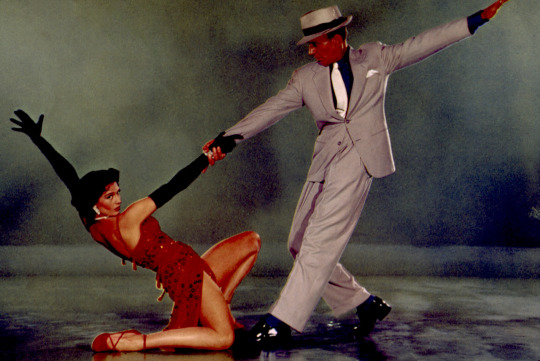
Period piece perfection, attention to detail and an impeccable eye. You simply cannot rival Oscar winner and three-time Golden Globe winner Vincente Minnelli during the height of his career. It was as if the musical Technicolor coming-of-age was waiting for his destined arrival. But, what else would you expect from the former art director of Radio City Music Hall? There, he designed and eventually directed monthly stage shows (Minnelli designed the iconic Parade of Wooden Soldiers costume, still in use for the annual Radio City Christmas Spectacular) before his imminent second coming to Hollywood.
There is a bevy of activity in MGM’s THE BAND WAGON (‘53), which easily turn this entry into a three-page essay. An ideal introduction for a novice, THE BAND WAGON is a visual encapsulation of the glorious movie musical as well as a quintessential vehicle for Minnelli to once again prove his raison d'être. Comprised of a “hundred or more little things,” THE BAND WAGON is a sheer explosion of joy with its ideal cast of characters, visually captivating sets and driving musical orchestrations which move the film along at an even pace, producing the industry standard of “That's Entertainment.” Its jaunty Broadway opening score sounds as if we’re sitting in a vaudeville theatre enjoying a live pit orchestra and on its own, is enough to lift spirits. The plot is simple. A washed-up hoofer attempts a comeback on the Broadway stage. Comedic pandemonium ensues.
No other film probably reflects Minnelli's former Radio City stage experience more than this backstage musical. The rehearsal scene where sections of the stage revolve, lift and lower, stage queues get confused and all goes amusingly wrong, was no doubt a reference to Radio City's elevator hydraulic system. Minnelli’s expertise in stage design is given an appropriate nod with the Proscenium Theatre models that appear on the shelf behind the couch in Jeff Cordova’s yellow reception room. However, this is not Minnelli's only production that offers us an insider's perspective. A film removing the Hollywood gloss, equally as exquisite, even in black and white, is the wickedly fun THE BAD AND THE BEAUTIFUL (‘52).

The majority of the main characters were based on some aspect of themselves or real-life people. Characters Lily and Lester Marton were based on screenwriters/lyricists Betty Comden and Adolph Green, who were already industry colleagues with Minnelli, as both also toiled on Broadway before arriving in Hollywood. Fred Astaire honestly felt that Cyd Charisse was too tall for him and his angst was written into the script. Oscar Levant was a true-life hypochondriac.
Of course, humor is not lost wherein the opening scene an auctioneer references Swinging Down to Panama as an amusing referral to the Astaire and Rogers film, FLYING DOWN TO RIO (‘33). Judy Garland and Mickey Rooney’s backyard musicals receive a playful jab when Lester (Oscar Levant) heartily states, "Why can't us kids get together and put on ourselves a show?” Our introduction to Jeff Cordova (Jack Buchanan) through the theatre poster—Jeff Cordova presents, adapted from... Jeff Cordova, starring Jeff Cordova, (pause, pan out and down) directed by Jeff Cordova— is the ideal introduction to the character’s omnipresent ego. Listening to the vocals of “You and the Night and the Music” with its embellished bravado, along with the excess of explosives could cause an individual to start coughing in sympathy. The film is brimming with sophisticated comedy, surely inspired by cocktail-charged, jovial conversations in smoke-filled rooms.
As usual, Minnelli’s sets are vibrant and imaginative. Cordova's home has an elegant Paul Williams aura. Even the doors are glamorous. Each room is painted in various colors to reflect different moods, including the ever-present Minnelli Red. In the theatre, where we are first introduced to Gabrielle (Cyd Charisse), the surreal stage backdrop is dreamy and existential with its combination of calming hues. I always look forward to that simplistically stunning scene.
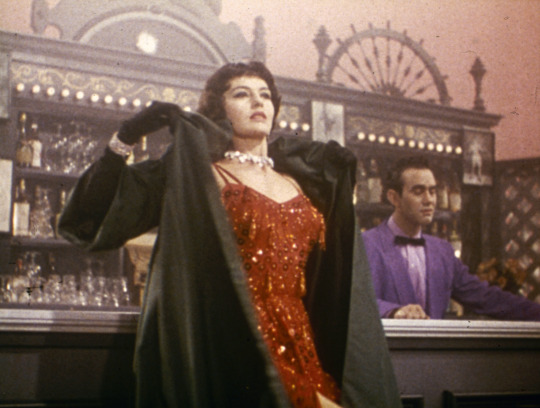
Speaking of Charisse, where was costume designer Mary Ann Nyberg all of our lives? It took me some time to realize the intricacies of the black A-line dress Charisse wears when arriving at Cordova’s home, more than likely because I was coveting her green gloves. Fashion fans, please gather. A scalloped black lace top is coupled with a green A-line underskirt bottom that is overlapped with black lace. The entire dress is covered in shimmering green sparkles. It is delicately romantic and ingenious all together, and is the most beautiful costume in the film, until the “New Sun in the Sky” number.
Nyburg hits the bullseye, creating a depiction of the sun manifested in the form of a dress. She then adds a red tulle arm puff. It is perfection until Charisse peels herself from a full-length jacket to reveal her dazzling red dress in the “Girl Hunt” ballet, which she claimed was her favorite costume. Charise performs an iconic dance in a nightclub once again as she did with Gene Kelly in SINGIN’ IN THE RAIN (‘52) and once again, those legs! Nyberg isn't done. The final scene finds Nanette Fabray in a blue and black A-line tulle gown and Charisse in a sweetheart neckline, moss green taffeta, fitted, biased cut gown, with so many details this will turn into a run-on sentence.
Many classic musical fans consider “Dancing in the Dark” one of the most romantic scenes put on film. After a contentious working relationship Tony (Astaire) and Gabrielle must learn if they truly can dance together to foster a hit show, which of course they do at night in the park, alone. Naturally, it is also the budding of their love affair. There was one notable scene that ended on the cutting room floor, “Two-Faced Woman,” and I am convinced it was a mistake to remove because its double-sided origami-like set design is exquisitely unique. However, it is easily found online and absolutely worth watching.
youtube
A barrage of aesthetically lush scenes appear in Minnelli films, executed so dynamically well you don't consciously realize how much is being absorbed and that is his exact tool of entrapment. A visual assault of the senses that naturally entices into his vortex. Critic Derek Malcolm had it exactly right when he said “The more you look at it, the more perfect it seems. Hollywood doesn't make films like this now because public taste has changed. But it's doubtful if they could anyway.”
It is doubtful that today's Hollywood could conjure the artistry of THE BANDWAGON, as it retains the same timeless light-hearted exuberance over 65 years later. Not only is that exceptional directing, it is pure Minnelli magic.
#Fred Astaire#cyd charisse#musicals#1950s#fashion#style#old hollywood#dancing#theater#performance#Constance Cherise
86 notes
·
View notes
Text
The Talented Actors of Pinky (’49) By Constance Cherise

The year 1949 brought “Negro Problem Pictures” that, according to the book Hollywood Black by Black film historian extraordinaire Donald Bogle, “... had compromises. In a covert manner they still relied on modified stereotypes such as the tragic mulatto and the mammy.” After Black soldiers returned from WWII, expecting a somewhat equal slice of the American pie, the American film industry attempted to reflect what was thought to be a truer to life depiction of the Black experience. According to the Christopher John Jones’ article “Image and Ideology in Kazan’s ’Pinky’”:
“The culmination of the trend toward black realism in the American cinema of the forties awaited the year 1949 with its unique cycle of pictures that tackled the race problem of America.”
The blacklisted director Elia Kazan was no stranger to controversial subjects, and PINKY (‘49) certainly was not his only contentious film. Films in 1949 like PINKY, HOME OF THE BRAVE, INTRUDER IN THE DUST and LOST BOUNDARIES, based on a real-life tale, were brought to the big screen in an effort to create a more appropriate depiction of the Black demographic, that was somewhat reluctantly evolved from the stereotypical roles of the prior years. Directed by Elia Kazan, PINKY is a film about a fair-skinned mulatto woman who is able to pass as white and the cast includes a cast of exceptionally talented Black performers.
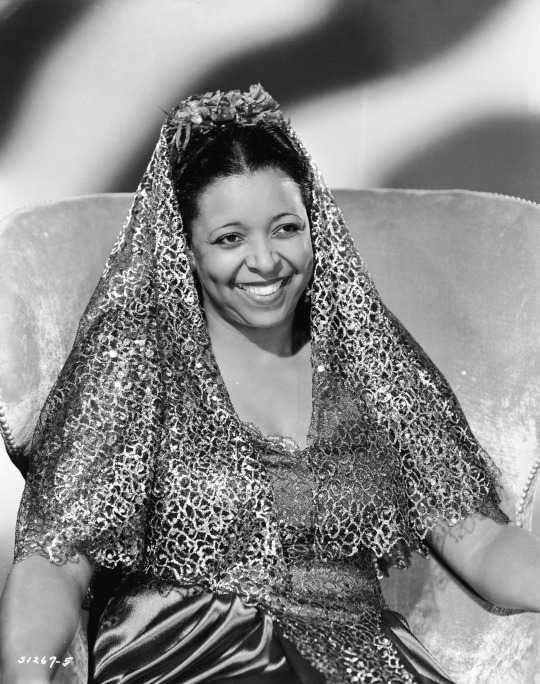
Ethel Waters
The second Black actress to be nominated for an Academy Award for her performance in PINKY, “Sweet Mamma String Bean” Ethel Waters endured a harsh childhood and rose to become the most famous Black female performer of her era. She crossed over into white venues that allowed for massive exposure. During the 1930s, Waters became the highest-paid performer of both the Cotton Club and Broadway, as well as the first Black woman to star in a weekly television series, Beulah. In the film PINKY she portrays the long-suffering role of Dicey Johnson, the grandmother of Pinky portrayed by Jeanne Crain, a white actress. Known for her lilting vocals, distinct laughter, religious fervor and disagreeable temperament, Waters’ “Stormy Weather,” one of her most famous songs, was inducted into the Grammy Hall of Fame in 1993. However, her performance of “Supper Time,” first performed in 1933’s AS THOUSANDS CHEER, is emotionally haunting. The song is about a woman who has just learned her husband has been lynched while preparing the dinner table for her children.

Frederick O'Neal
Frederick O’Neal was quite the antithesis of the character he portrays in PINKY: Jake Walters, a smooth-talking innocuous scoundrel. With his brooding, stalky 6-foot frame, O'Neal was well known for his mild-mannered and amiable disposition. O'Neal, along with colleagues, organized the Black theatrical group the Aldridge Players in 1927. In 1940, he became the co-founder of the American Negro Theatre, located in Harlem, producing and performing in the play Anna Lucasta, which later became a film in 1958 starring Sammy Davis Jr. and Eartha Kitt. A political activist and staunch supporter of the arts, O’Neal’s viable efforts through the American Negro Theatre constructed a path for such actors as Sidney Poitier, Harry Belafonte and Ruby Dee during the Black Art Movement of the 1960s. O’Neal would go on to become the first Black president of the Actors' Equity Association from 1964 to 1973. In addition to PINKY, O'Neal’s other film credits included SOMETHING OF VALUE (‘57), FREE, WHITE AND 21 (‘63) (a telling title) and TAKE A GIANT STEP (‘59).

Nina Mae McKinney
Petite, angelically beautiful and best known for her role in one of Hollywood’s first all-Black films HALLELUJAH (‘29), Nina Mae McKinney was approached by MGM's King Vidor after being seen in the chorus line of the play Blackbirds, which earned her the leading role in the film. Dubbed in Europe “The Black Garbo,” McKinney’s subsequent Hollywood roles were stereotypically devised and her talents were underutilized, as with most Black actresses of her time. Her role in PINKY as Rozelia, Jake Walter’s feisty girlfriend, was more than likely McKinney’s “most notable role” notes Donald Bogle. She found more success on the American stage and even further success, as did the majority of Black artists, performing throughout Europe.
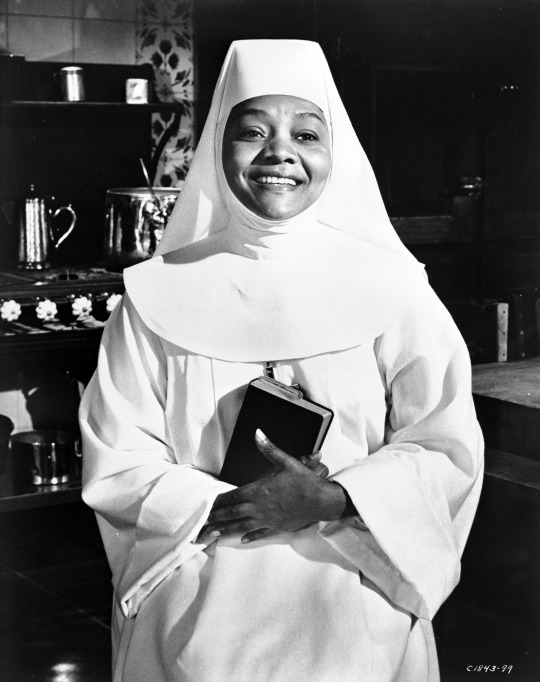
Juanita Moore
Juanita Moore is best known for her iconic performance as Annie Johnson, which garnered her an Academy Award nomination, starring alongside Lana Turner in the moving film IMITATION OF LIFE (‘59). In the film, she portrays the live-in maid to Turner and also the mother of a daughter who passes for white (Susan Kohner). Like many Black actresses of the era, Moore began as a dancer in the famed Cotton Club. Her film debut was as a nurse in PINKY in which she appears very briefly during the film’s end. By the end of her career, she would appear on film and television in over 80 performances, including small and often uncredited roles in THE OPPOSITE SEX (’56), THE GIRL CAN’T HELP IT (’56) and THE SINGING NUN (’66)
#Pinky#1949#problem pictures#black movies#old hollywood#Black representation#nina mae mckinney#Ethel Waters#Frederick o'neal#Juanita Moore#Singing Nun#Anna Lucasta#TCM#Turner Classic Movies#Constance Cherise#TCM editorial#Hollywood Black
102 notes
·
View notes
Text
The Underrated Charm and Star of Theresa Harris By Constance Cherise

When she was garbed in fur laden fashion by Orry Kelly, it was right on her. When she performed as a replacement for Ginger Rogers’ character in PROFESSIONAL SWEETHEART (‘33), she left Rogers' performance shattered (although Rogers’ singing was most likely dubbed). When she performed with Eddie “Rochester” Anderson in BUCK BENNY RIDES AGAIN (‘40), she was girlishly charming. Talent explodes from this beautifully elegant woman, in a tiny 5’2” frame, who was given mere snippets of screen time. Her versatility when performing proved she had all of what it would take to successfully compete with any of her counterparts, and that she could easily dominate leading roles.
In researching the career of Theresa (aka Teresa) Harris, there truly is not much information readily available. One comes across a repeated staple of accoutrements: she was born in Houston, she was outspoken and intelligent, she possessed innocent beauty. She was uncredited in many roles and unaccepting of the stereotypical “Mammy” portrayal. According to online sources, the number of films she performed in vary between 70-90. However, the fact that she shared the screen alongside the greatest of Hollywood's Golden Age, including Stanwyck, Dietrich, Harlow and Gable [Madonna's “Vogue” comes to mind], is resoundingly indisputable.
Articles and books alike generally re-state the same facts and quotes as information is limited, and this is absolutely a shame because just a glimpse of Harris' talents, when she was given the slightest chance to expand her roles, proves she was nothing less than radiant.
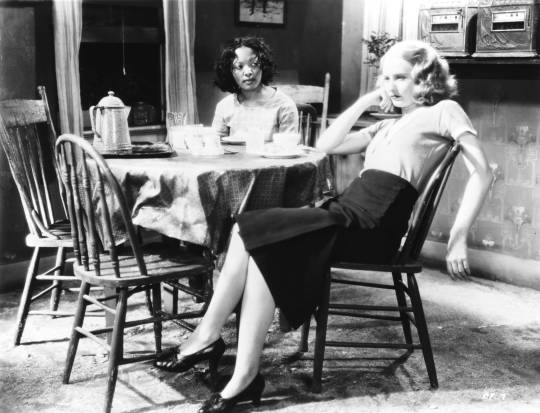
Harris is probably best remembered for her performance alongside Barbara Stanwyck in BABY FACE (‘33), a film known for the untraditional on-screen interracial friendship between Chico (Harris) and Lily (Stanwyck), as well as its sordid subject of a calculating woman who sleeps her way to the top. Hooray for the pre-Code era! As Lily’s status grows, Chico’s role must change as the two cannot co-exist in the same frame of friendship, at least to the public eye. While it is true that Chico eventually becomes Lily's maid, what isn't as precisely clear is whether Chico’s subservient role is a necessary evil, a mutually beneficial business collaboration or a combination of both.
Chico: Is these the new furs honey?
Lily: Not so much honey...
Chico: Yes ma'am!
In two separate instances, Lily makes it crystal clear to her father and later her lover that she and Chico are an indivisible set. As Lily's fortune, and wardrobe, grows, so does Chico's, although the majority are refined maids’ uniforms. The entire premise of the film is Lily manipulating men to achieve the life she desires, and it's clear that not only does she refuse to leave Chico behind in her imminent rise, but that Chico is a willing accomplice as both benefit from Lily’s duplicity. Given the subservient roles relegated to black performers at the time, it is almost shocking, yet at the exact same time somehow unexpectedly intriguing, to witness. In fact, Harris' performance in the film inspired two-time Pulitzer Prize-winning playwright Lynn Nottage to create the play By the Way Meet Vera Stark.

A few articles state that Harris is given almost equal screen time in BABY FACE, however in my humble estimation, it is actually surprising how much more screen time Harris is given alongside Marlene Dietrich in the comedy THE FLAME OF NEW ORLEANS (‘41). In fact, Harris is given almost as much as the lead. Not surprisingly, Harris plays a maid yet has similarities to her role in BABY FACE as she once again is a cunningly convincing co-conspirator to Dietrich’s amusingly scheming deceit.
In PROFESSIONAL SWEETHEART, Harris performs alongside Ginger Rogers, and although she has very little screen time and is uncredited, when given the platform she is a fiery siren. Not a siren in a bombshell body type of way...a siren in a “once I start to perform, you better HOLD YOUR MAN (’33) type of way, as her sensuous vocals ignite the airwaves. (Pun intended, Harris starred alongside Jean Harlow and Clark Gable. Harris is great in that film as well.) It seems all the things she wants to be, but isn't allowed to be, translate through her voice. Harris’ performance is sinewy, scintillating and smoldering. Her husky vocals drip with eroticism awakening the sacral chakra. In that one performance, she expertly delivers, upending the entire film not only stirring the passions of the opposite sex but shockingly for its time, the reaction is reflected in white male actors.

The agent attempting to steal Rogers' character away from her current employer while listening to Harris over the radio states: “Think about it, every man in the country listening to that creature”...but her vocals are so sexily overwhelming even Rogers' character knows she is pulling at invisible straws, evidenced by the expression of jealousy plastered over her face and her husband’s subsequent provocation. Harris' performance in the film THUNDERBOLT (‘29) also mirrored this same reaction, and clearly the directors of each film wanted this to be markedly apparent. Truth be told, even in current times, Harris’ performance is so incendiary with its seductive runs and glissandos, an alien would find it titillating.
Perhaps Hollywood saw, and was threatened by the great potential in her, and that just may be precisely why she was essentially boxed in. When Harris performed in a scene, regardless of who surrounds her, your eyes naturally gravitate towards her magnetism, and that level of subtle explosive power can easily obliterate anyone else within the lens of the camera. It is abundantly clear Harris could hold yours and her own at the same time, executing with such refined finesse, such grace, it's contemptibly somber to know that her talent, along with a bevy of other black actors, were so underutilized.
#Theresa Harris#Jezebel#Baby Face#Barbara Stanwyck#black representation#Hollywood black#TCM#Turner Classic Movies#Constance Cherise
272 notes
·
View notes
Text
Celebrating Black Love Through Art with RAFIKI (2018) By Constance Cherise

"I truly believe that the right to love is the most basic human right." - Wanuri
Kahiu In a society where traditional roles are prevalent, RAFIKI (2018), translated as “friend” in Swahili, is a love story between two coming-of-age women in Nairobi, both choosing to be led by the unavoidable direction of their own hearts. When Kena (Samantha Mugatsia) and Ziki’s (Sheila Munyiva) eyes meet, sparks begin to fly. The tranquil and sensible Kena is introverted, while the extroverted Ziki is radiantly effervescent. Her exuberance combined with her rebellious nature, naturally propels Kena’s attraction. After their first meeting, Kena’s mother senses her daughter’s inner glow, which, of course, manifests as an outer glow.
When their relationship is unveiled, Kena’s father is untraditionally accepting, enveloping Kena in his warm embrace. Kena’s indoctrinated mother disapprovingly rejects her as Kena’s father admonishes his ex-wife, citing the alternative choice of compassion. Hands are laid upon Kena as she is prayed over to rid her of the demons that surely have possessed her being. But, Kena’s dismal circumstance is of no consequence. Kena is unapologetically in love.

Winner of two African Movie Academy Awards and a GLAAD Media Award, as well as a list of additional accolades, RAFIKI was inspired by Monica Arac de Nyeko’s 2007 Caine Prize-winning short story “Jambula Tree” and is directed by the progressive Kenyan filmmaker Wanuri Kahiu. The film is in a genre of film described and coined by Kahiu as “Afro Bubblegum.” Kahiu explains the classification as “fun, fierce and frivolous… the advocacy of art for art's sake.” However, the “ars gratia artis” motto famously surrounding MGM’s Leo the Lion is not the groundbreaking director’s only link (albeit a loose one) to classic Hollywood.
As of the release of the film, homosexual relationships were illegal in Kenya. Much like the scrutiny of the Motion Picture Production Code in early cinema, The Kenya Film Classification Board requested the conclusion of the film to be "more remorseful," according to Kahiu. Refusing to alternate the film, Kahiu stated, "I never wrestled with changing the ending." Subsequently, the film was banned in Kenya, and in turn, Kahiu sued the KFCB. In an effort to meet the seven-day screening requirement for Oscar consideration, restrictions of the film were temporarily lifted. Extra screenings were added as sold-out crowds packed theaters, and in May 2018, RAFIKI became the first Kenyan film to play at the Cannes Film Festival.
In the film, Kahiu creates a quietly powerful scene when the town outcast, a gay man, sits beside Kena after her secret is publicly known. Although it seems he wants to say something, they don’t speak. They don’t look at each other. He simply sits beside her. He knows words are not necessary. Their unfortunate and unspoken connection is apparent and with a slight turn of his head, as tears start to run down Kena’s cheek, he acknowledges the pain that is new to her but all too familiar to him.
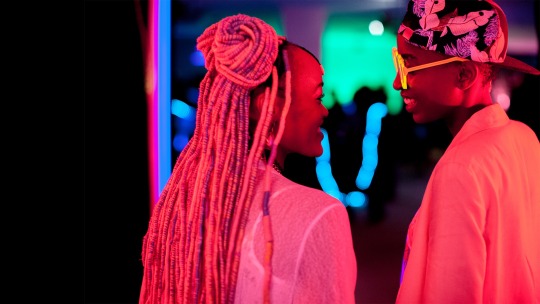
The casting of this film is absolutely flawless, there is not one performer whose acting did not come across as genuine. Mugatsia, an untrained actress who Kahiu noticed at a party and immediately recognized as Kena, consistently hits every mark. Munyiva’s charisma permeates the screen with her multicolored dreadlocks and alluring smile.
RAFIKI did not win accolades for its subject matter. Lesbian films are nothing new. RAFIKI’S inclusive appeal is the beauty in which the story is presented, the joy of a hopeful ending, which, as classic film fans familiar with the Motion Picture Production Code know, the mere spark that a favorable ending could be possible under socially adverse circumstances is an ominous threat, for the fact that it can cause one to re-evaluate. Kahiu sweeps away the sand to reveal the pearl, notably capturing what is most precious, and because she accomplishes this with such gentle precision, it is clear why the film was banned.
You do not walk away from RAFIKI regarding it as a lesbian love story, you walk away merely seeing it as “a” love story, and you don’t need to be part of the LGBTQ community to recognize or relate to it, you simply need to...be.
#Love#romance#lesbian representation#lesbian romance#Kenya#African directors#Africa in film#LGBTQ#Rafiki#Afro Bubblegum#TCM#Turner Classic Movies#Women Make Film#Black directors#Constance Cherise
105 notes
·
View notes
Text
Rita Hayworth At Her Best By Constance Cherise

In 1994, THE SHAWSHANK REDEMPTION reintroduced Rita Hayworth to a new generation, but from her most famous film role in GILDA (‘46) to years later, her effervescence and distinct beauty remains. The film DOWN TO EARTH (‘47) was not one of Hayworth's most popular features by far, but full-length Technicolor musicals available on YouTube during a restless night are always a draw. Hayworth glides with sure-footed exuberance and joy during her opening number in DOWN TO EARTH, and even though her plan is apparent, her subsequent domination is rightfully justified. There is no competition. There is only Hayworth, and because she is unequivocally confident within herself, we are confident in her also. All other dancers must fall back due to her sheer magnetism, and this is how I was introduced to the beguiling Rita Hayworth.
Trained in multiple dance disciplines from the age of three, the Brooklyn-born, Margarita Carmen Cansino is somewhat falsely thought of as fully Latina. Her father was from a generational line of Spanish dancers. Her mother, a former Ziegfeld Girl, was of English and Irish descent.
Hayworth’s film debut was an uncredited role at the age of eight in the short LA FIESTA (‘26). At age 16, after being discovered dancing as her father’s partner in Tijuana, she appeared in the Fox Studio production of DANTE’S INFERNO (‘35). She was dropped from her contract after five films. As the result of her first husband and manager’s unabashed promotion, Hayworth was offered a contract by Columbia Pictures, beginning her tumultuous career-long professional relationship with the infamous studio head, Harry Cohn.

Although she was seemingly the envy of the modern world, Hayward led a tragic life. She endured three years of painful electrolysis of her hairline, giving her a higher forehead and helping to square her rounded face. She shed extra pounds and lightened her naturally dark hair color in order to anglicize her Latin features. Shockingly, the process of her ethnic erasure was publicized and celebrated by Columbia. She later became involved in a series of abusive marriages which not only contributed to her alcoholism but left her financially crippled. In 1974, both of her brothers died within one week of each other. In 1987, Hayworth tragically passed away at the age of 68 from the progressively debilitating disease of Alzheimer’s.
She was named the “Love Goddess” of the ‘40s and was neck-in-neck with Betty Grable as the pinup favorite of the era. Although she performed in a series of films, it was the role of Gilda that not only catapulted her into stardom but would negatively plague her off screen for the majority of her life.
“Every man I knew went to bed with Gilda... and woke up with me.”

She was one of a handful of actresses who performed with both Gene Kelly and Fred Astaire, who was thoroughly impressed with how quickly she could learn complicated routines. In Columbia's first Technicolor and highest grossing film, COVER GIRL (‘44), Hayworth displayed her perfected tap-dancing skills alongside Kelly. Between the staged numbers of “The Show Must Go On,” “Poor John,” “Put Me to the Test” and Hayworth descending from the heavens in a seemingly endless swirling stage, Columbia’s introduction to Technicolor and choice of Hayworth and Kelly as its stars was a clear success.
In the musical comedy YOU’LL NEVER GET RICH (‘41), Hayworth tap danced with Astaire in “Boogie Barcarolle,” and by the glint in her eye and the slight wobble of her head, it is apparent that she has cleverly devised a ploy that Astaire seems to have graciously fallen into. It takes Astaire only a short amount of time of scrutinized observation to be convinced Hayworth's character knows precisely what she is doing. She is exacting, mirroring Astaire’s performance with an air of certain aloofness. When finally, she makes eye contact with Astaire, a shift of power has taken place, where instead of Hayworth keeping up with Astaire—Astaire must keep up with Hayworth.
“Dancing in Tijuana when I was 13 — that was my 'summer camp.' How else do you think I could keep up with Fred Astaire when I was 19?”

Hayworth appeared in comedy, drama and film noir, however for all of her natural enchantment and stunning good-looks, Hayworth self-admittedly was a dancer. Although her famous (or infamous depending on perspective) “Put the Blame on Mame'' number in GILDA has imprinted itself in classic film history, in my humble opinion, her most outstanding performances were not part of her hyper-sexualized persona. Native dance is such an imperative component of identity, and in the film TONIGHT AND EVERY NIGHT (‘45) a pregnant Hayworth performs a highly glamorized version of a Flamenco dance in the number “You Excite Me.”
But it is in THE LOVES OF CARMEN (‘48) where her el duende is truly unleashed...where the constructed Rita Hayworth is pushed aside and the soul of Margarita Carmen Cansino, that no amount of ethnic eradication can conceal, reemerges in all of its glory. She is incandescent, beaming with fluid passion. Once again, her expression proves she is aware of exactly what she is doing as she seductively tantalizes her co-star Glenn Ford with her dazzling smile, her sparkling eyes, and her...castanets. THE LOVES OF CARMEN may not have been one of her most popular films, but it is a film worth watching as it gives us a rare glimpse as to who Rita Hayworth was, after society dictated whom she genuinely was wasn’t good enough. No orchestration, no glittering costumes or ornate sets, simply the one and only Margarita Carmen Cansino, performing the ultimate role, herself.
#Rita Hayworth#Columbia#Gilda#Cover Girl#Glenn Ford#TCM#film noir#flamenco#Turner Classic Movies#Constance Cherise
185 notes
·
View notes
Text
Tip Top Tap: Great Tap Performances in Film By Constance Cherise
In my opinion, there is no conversation surrounding classic musical tap dancing in film without including the likes of the Nicholas Brothers, Fred Astaire or Gene Kelly. Over the years, there have been countless memorable dance scenes, and in compiling a list of the routines I felt were exceptional, I wanted to search further than my initial go-to's. Here, in no certain order are my not so obvious choices of remarkable classic musical tap-dancing performances.
The Nicholas Brothers: “Jumpin’ Jive” – STORMY WEATHER (‘43)

They are the incomparable Nicholas Brothers. Their bodies act like boneless structures, they leap through the air defying gravity and land in splits, consecutively. Just when you think the dance cannot get any better, they move to the next set, where the finale is literally and figuratively unbelievable. This is why Fred Astaire called this performance, “The best ever put on film.” If this is your first time seeing this sequence, I can assure you it will leave you shaking your head in pure amazement. Baryshnikov, Balanchine, Astaire and Kelly, were humble fans of the Nicholas Brothers, and all were in awe of their capabilities. Not only is this performance astonishing, according to the brothers, it was unrehearsed and executed in one take.
Judy Garland and Gene Kelly: “Barn Dance” – SUMMER STOCK (‘50)

Gene Kelly and Judy Garland...pure chemistry. This is not Kelly and Garland’s first dance number together. In fact, during their MGM career, they co-starred in THE PIRATE (’48) and FOR ME AND MY GAL (’42). Kelly is his normal effervescent self, performing his discipline in grounded masculinity. Garland, who did not arrive at MGM as a professionally trained tap dancer, matches Kelly move for move until Kelly performs his signature airplane twirl. Although Garland is the healthiest we've seen her in years at the point of this picture—as she recently completed a stent in a detoxification facility (note the measurable difference in her weight by the end of the film in the musical number “Get Happy”)—she remains as light as a feather. “Barn Dance” is a joyful, exuberant number and is reflective in the expression on their faces. SUMMER STOCK would be Garland's last film with MGM. It’s a fitting circumstance that Kelly would become Garland's final partner, as eight years earlier, Garland welcomed and mentored Kelly in his first film, FOR ME AND MY GAL, a facet of their friendship he would always remember.
Gene Kelly: “I Like Myself” – IT’S ALWAYS FAIR WEATHER (‘55)

As if his SINGIN’ IN THE RAIN (‘52) icon status, Hollywood good looks, voice and choreography skills weren't enough, Gene Kelly performs in a pair of roller skates in IT'S ALWAYS FAIR WEATHER (‘55) and once again proves his genius. But, he doesn’t just roller skate. He performs with the precision and grace of a professional ice skater. No stunt doubles here, this is all Kelly (he did the majority of his own stunts). His performance is flawlessly intricate, and for Kelly, it seems as natural as walking. When he breaks into tap dancing, performing time steps and heel clicks, you start to wonder what can't he do? Twenty-five years later and with just as much stability, he would once again don a pair of skates while performing in the cult classic fantasy film XANADU (‘80).
Fred Astaire and Gene Kelly: “The Babbitt and the Bromide” – ZIEGFELD FOLLIES (‘45)

This is the first time Kelly and Astaire dance together on film (they would not dance together again until THAT'S ENTERTAINMENT, PART II, [‘76]). It is a clever vaudevillian-style number, allowing exactly enough time to showcase each performer's attributes, amusingly injecting instigation, to highlight their professional rivalry, concluding in an energetic finale. It is an excellent visual example of distinguishing their unique technique. Each is certainly at their best given their status and subsequent comparison. However, those who are true classic musical fans understand Kelly and Astaire cannot be compared. Although their dance styles are different, they are also equally extraordinary. Kelly's athleticism in juxtaposition to Astaire’s delicacy is perfectly matched.
Fred Astaire and Ginger Rogers: “I’ll Be Hard to Handle” – ROBERTA (‘35)

The pairing of Astaire and Rogers was destiny. This particular number was performed live: live music, live tap dancing, with no cuts and done in one take. If you listen closely, you can even hear Rogers’ giggle. It seems as if they casually blend into the dance, but of course we know this is not the case. At times, their movements are deliberately delayed and at others, they are kinetic. Midway, the two have an argumentative exchange exclusively through tap dancing. Rogers echoes Astaire tap for tap and their symbiosis is apparent. It is a lighthearted and carefree number, and as with all Rogers and Astaire performances, absolutely delightful.
Bill “Bojangles” Robinson: Stair Dance

Best known for his successful pairings with Shirley Temple, of which both were sincerely fond of each other, here he performs his famous stair dance. Bill “Bojangles” Robinson honed his craft from childhood, which eventually led him to become one of the first African American’s to appear in vaudeville without blackface and as a solo performer. Here, he uses his hands and his feet before climbing the steps, as if testing them to see if they are worthy enough to withstand his elegantly polished footwork. He continues to elaborate each pattern in growing confidence. His feet remain low, and at times it seems that he is standing still. Every tap is clean and sharp as each stair resonates with a different note. Robinson's genius is in creating a performance that is technically complex and elaborate, that appears as if it were commonly effortless.
#Tap dancing#old hollywood#classic film#musicals#nicholas brothers#Gene Kelly#Judy Garland#Fred Astaire#Ginger Rogers#Bill Bojangles Robinson#TCM#Turner Classic Movies#Constance Cherise
365 notes
·
View notes
Text
Falling in Love with Black-and-White By Constance Cherise

What introduced you to black-and-white film? What did you see or experience that made you want to explore the genre? My induction to classic film as a whole began with coming upon the dance scene in SINGIN’ IN THE RAIN (‘52) between Cyd Charisse and Gene Kelly. Back then, many moons ago, before we could hit a play button on a cell phone, we had VHS tapes. For those of you who remember (and yes...I know you are out there), we had the ability to "tape" one program on top of another. Imagine my wonderment when through the grainy static appeared glorious Technicolor. Of course, like most, my introduction to Technicolor was THE WIZARD OF OZ (‘39), but Kelly and Charisse’s sultry number with its saturated colors and suggestive tones was unique. Very unique, and by the end of “The Broadway Melody” number, my senses were joyously, yet thoroughly assaulted, and thus my love for classic Technicolor musicals began. “Technicolor” being the operative word.
I had no interest in black-and-white films. They looked boring in comparison to this world of saccharine hyper-fantasy. When I finally decided to voluntarily introduce myself to watch a black-and-white film years later, I chose SUNSET BOULEVARD (‘50) as my initiation due to its reputation and repeated references. It’s practically impossible to submerge into any facet of classic film or theater and not be exposed to the famous (and often misquoted) line, "I'm ready for my close-up Mr. DeMille" in some fashion. I surmised my eventual coming around was preordained. In less than 10 minutes of watching the film, my need for color was replaced by an appreciation of exquisite set design and extraordinary cinematography. Being drawn to visually stunning films is, after all, what made me fall down the rabbit-hole and coming to the immediate realization of how wrong my opinion was—the possibility that a black-and-white movie could be exciting—led me open to exploration.

SUNSET BOULEVARD also introduced me to Gloria Swanson, and after such a captivating performance, how can you not want to know who that woman is? Sure, she plays the role of a demented character, but it doesn't take too much of a stretch of the imagination to unmask her beauty. When I took the time to learn more about Swanson’s bio, and saw photos of her in her late ‘70s at Studio 54, I would've invited her to my dinner party anytime. SUNSET BOULEVARD blew the doors open, and its introduction led me to WHATEVER HAPPENED TO BABY JANE? (‘62).
I came to WHATEVER HAPPENED TO BABY JANE admittedly ignorant of the performances of either star. I knew of their reputation, but I had not watched any of their films. At that point, as far as my film catalog, Joan Crawford and Bette Davis were still black-and-white film stars. They didn't dance like Fred and Ginger or create geometric shapes like Busby Berkeley, nor did the film carry the reputation of CITIZEN KANE’S (‘41) cinematography. But, once again, BABY JANE’S reputation superseded itself. The first time I watched the film, when Davis appeared on screen as an older woman my initial thought was..."uh-oh.” I wasn’t entirely sure if she was fully deranged or if she was extremely idiosyncratic. I gave her the benefit of the doubt, it was more amusing that way.
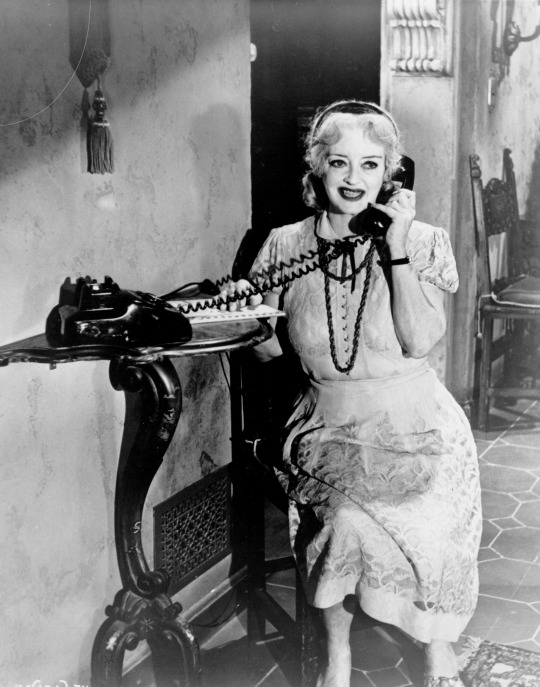
The layers of powder on Davis' face, the way she frumps up and down the stairs, her disproportioned level of anger and the juxtaposition between Crawford and Davis's character is distinct. I'm sure there is a separate psychological discussion on why we are intrigued by characters that are older individuals either unhinged or stuck in time during their twilight years. However, being introduced to an actress in such circumstances always left me wanting to know, much like Swanson, who that actress was when she was younger. As a result, in researching some of their best roles, ALL ABOUT EVE (‘50), NOW VOYAGER (‘42) and MILDRED PIERCE (‘45) came into play, films that not only introduced a different perspective but also offered another dimension within the genre. Even though there are no sprinkles of glitter or a bejeweled chorus line of women, production values did not fade, they were merely...different.
I will always be a glitz and glamour, glorious Technicolor-musical girl, but what the world of black-and-white film truly offered me was a practical tool to measure other films due to its stripped nature. These ladies knew their craft to masterful perfection and inevitably that granted me entree to a breadth of exceptionally well-executed films and iconic female lead actresses, essentially shifting my opinion about the entire genre of black and white film.
#black and white movies#classic film#old movies#old Hollywood#Technicolor#Sunset BLVD#Whatever Happened to Baby Jane#Bette Davis#Joan Crawford#Gloria Swanson#TCM#Turner Classic Movies#Constance Cherise
83 notes
·
View notes
Text
Just Give Her the Spotlight - The Marvelous Mrs. Miller By Constance Cherise
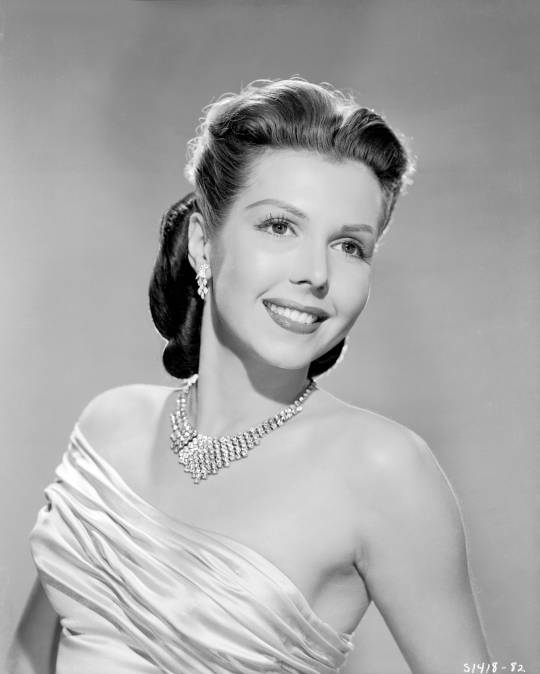
In 1987 at the age of 64, legendary tap dancer Ann Miller performed “Shakin’ the Blues Away” on the television special Happy 100th Birthday, Hollywood. In 1988, Miller performed a medley from the nine-year running production “Sugar Babies” on the Palladium stage along with Mickey Rooney, and in 1989 she performed the tap dance routine from 42ND STREET (‘33) for the Disney-MGM Studios Theme Park Grand Opening television special.
While recently watching these productions, I feared that I was going to witness a frail elderly woman, who was still convinced she “had it,” either embarrass or hurt herself. Thankfully, my future 64-year-old self is encouraged to say I was utterly wrong.
I watched each performance with unblinking eyes, in complete shock and jaw-dropping disbelief. Generally, mature performers are surrounded by dancers and ornamentation as distraction, while the older dancer waves their arms and kick their feet a time or two then get whisked off stage. Not so with Ann Miller. It’s true, a bevy of tap dancers joins her, but they are only for Broadway effect. She owns every performance, complete with her rapid-fire footwork and powerful Broadway belt (and when I state the term “belt,” I do not mean she sang well for her age, I mean “where did that voice come from Ethel Merman belt”). Miller claimed she never had to practice vocalizing, that her power came naturally. I suppose being used to many stars that were dubbed, I never questioned whether Miller’s voice was actually being used during her performances. I was too busy dissecting her dazzling costumes, lavish sets and trying to figure out how she could possibly execute gun-machine taps and appear as if her feet did not leave the ground.

Houston-born Johnnie Lucille Collier (her father anticipated a boy) aka Ann Miller was enrolled in dance school from the age of six. And, after confronting her philandering father who was caught red-handed with a nude woman in his bed, Miller and her mother of Cherokee descent, Clara, moved to California.
The naturally adept Miller eventually won a contest where she appeared for two weeks at the Orpheum Theatre. At 13 years old while performing at a supper club, Miller was discovered by talent scout Benny Rubin and comedienne Lucille Ball, who suggested she test with RKO. Required to prove her age, Miller enlisted her father, a criminal lawyer whose clients included Clyde Barrow and Bonnie Parker (yes, that Bonnie and Clyde), to provide a false birth certificate stating she was 18 years old. As she began quite young in films, her mother Clara was her constant companion and protector, a memory that Miller would speak fondly of. The two remained close until Clara’s passing. Miller worked for multiple studios including RKO, Columbia and MGM, toured with major Broadway productions and had numerous television appearances.
Her debut was an uncredited role in ANNE OF GREEN GABLES (‘34). She performed on Broadway at age 16, and after a two-year stint she returned to Hollywood. She mainly appeared in B films until she auditioned for MGM’s EASTER PARADE (‘48), where she performed the entertaining number “Shaking the Blues Away.” In an interview with Robert Osborne, Miller admits to performing the number in a brace, due to her former husband’s physical abuse where in a drunken rage, he threw her down a flight of stairs breaking her back. Miller, who was nine months pregnant at the time, gave birth to her daughter, who tragically survived for only a few days.
A believer in the metaphysical, Miller wrote a book, Tapping Into the Force, about what she concluded were her psychic gifts. She would recall during the opening night of “Sugar Babies” in New York while standing alongside Rooney: "In the middle of the number, I felt this force hit me! It almost knocked the breath out of me. All of a sudden I started singing like I'd never sung before!” When returning backstage, her earring, which was securely fastened, fell from her ear landing near a piece of scenery with the letters “J-U-D.” Miller stated, “This inner voice I have said...Ann it's me, Judy!” In explaining her supernatural experience to Rooney, Miller revealed to Rooney, "Judy was on the stage with us tonight,” to which Rooney replied…“I know it.”
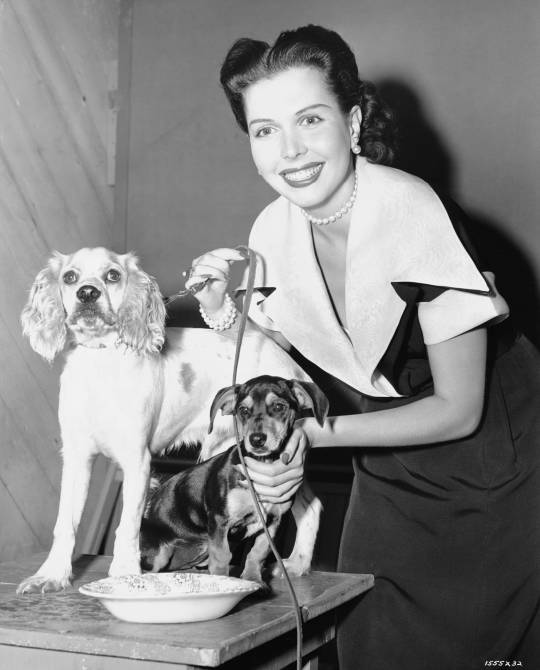
Big hair jokes aside, there really is something absolutely adorable about Miller that is hard to place your finger on. Beams of light still seemed to emanate from her face in her elder years. Not only was she the consummate professional, exuberant and entertaining with the mind of a steel trap, she was an essential keeper of the flame of all things Golden Age.
Her performances in KISS ME KATE (‘53), EASTER PARADE (‘48), LOVELY TO LOOK AT (‘52) and HIT THE DECK (‘55) were showstoppers, and those are only from her MGM years. Even her Stan Freberg directed Great American Soup commercial was one-minute and three-seconds of camp genius. If you are a musical fan and have not seen this commercial, stop reading now and look it up...don’t worry, I’ll wait. The way she rips her apron off to reveal her glittering costume as if she has been desperately awaiting this chance for her entire life, the overwhelming expression of sheer unadulterated rapture on her face, how she tosses her top hat with dynamic gusto, performing her signature twirls returning to the set of the kitchen— there is even a touch of Busby Berkeley for good measure. It simply could not be more gloriously MGM-musical perfect.
“It’s funny I never studied a lot of acting, I just thought acting was being me!”-Ann Miller
Usually, I have no issue detailing my favorite performances, however, with Miller I simply cannot. Each performance is consistently perfect and sure-footed with precise accuracy—it's almost impossible to choose one over another. Although she was not a Hollywood leading lady, she was showbiz through and through. Miller did, however, state in a 1990 interview with Bob Thomas, “Sugar Babies gave me the stardom that my soul kind of yearned for.'' If you watch her in interviews and her performances, you will find there is no line of delineation. Miller was a willing, fully assembled readymade pre-packaged star born for the spotlight. From her earliest performance to her last, one thing is resoundingly true—Ann Miller was not created for Tinseltown, Tinseltown was created for Ann Miller.
136 notes
·
View notes
Text
The Aura of Carmen Jones By Constance Cherise
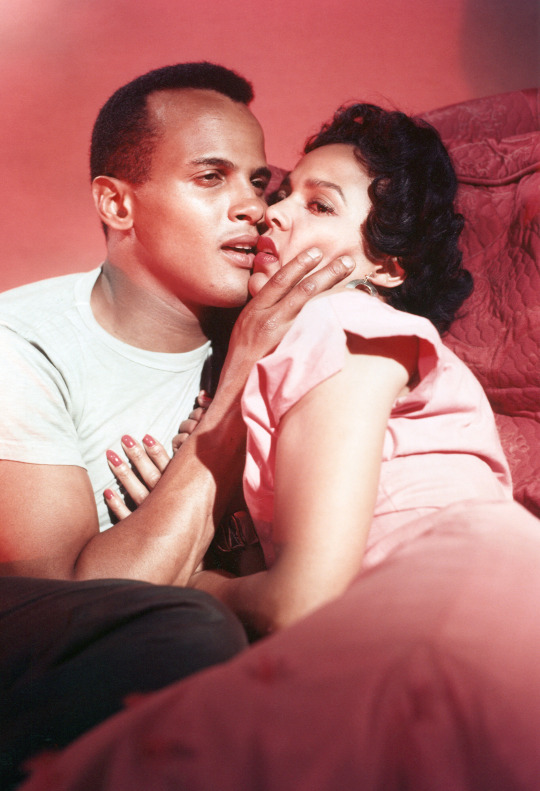
Based on Georges Bizet's opera, the all-Black 20th Century-Fox musical CARMEN JONES (‘54), starring Academy Award and Golden Globe-nominated Dorothy Dandridge and EGOT Harry Belafonte, was a significant progression for its historical time-frame. Best expressed by author and film historian Donald Bogle in his book Dorothy Dandridge: A Biography, “…it represented a major step forward during the Eisenhower era.”
The Cleveland, Ohio-born Dandridge, who had been lighting the stage on fire as a chanteuse in her nightclub act prior to starring in CARMEN, was not originally considered for any role—far less the lead—by infamous director Otto Preminger. According to Bogle, Preminger (who during the course of filming would become Dandridge’s lover) viewed her as “too sweet and regal,” based off of her previous nightclub performances, where Dandridge presented as a sensual vocalist, draped in sinuous gowns that clung to her figure. In order to get the role, Dandridge stripped her “polished” persona, modified her makeup and fashion revealing an alter ego to Preminger. He took one look at her and declared “My God. It’s Carmen!”
Often compared to Lena Horne, the exquisitely beautiful Dandridge was trained as an artist alongside her sister from childhood. The Dandridge Sisters evolved from church gatherings to the acclaimed Cotton Club, where Dandridge met her future husband Harold Nicholas of the famed Nicholas Brothers. Soft spoken, stunning and a quick study, Dandridge collaborated with arranger/composer Phil Moore, devising a smoldering nightclub act that was eagerly received in all-white venues. Her crossover appeal lent well to Hollywood. When talk of a CARMEN JONES production spread, Black Hollywood clamored. CARMEN JONES would be the first all-Black musical since MGM’s CABIN IN THE SKY (‘43), as well as the first Black film shot in Technicolor. Stars the likes of Harry Belafonte, Diahann Carroll and Pearl Bailey would solidify roles.
The lyrics of Carmen’s first song of the film, “Dats Love,” is an announcement of her essence.
“You go for me and I'm taboo
But if you're hard to get I go for you
And if I do then you are through, boy
My baby that's the end of you”

From the moment Carmen sashays into the cafeteria, casually holding a red rose (a present from one of her hopefuls no doubt), we know she is unique based solely on her black ruffle trimmed, low-cut blouse and fitted red skirt: A subliminal combination of colors associated with the image of a stereotypical devil.
She is decisive of her prey. She admires Joe (Harry Belafonte) unabashedly sizing him up as an alpha. Her mind is made up. She is going to get exactly what she wants, and who could blame her? Joe with his honey-toned skin and chiseled features is beautiful, and the fact that he is unresponsive intrigues her senses all the more. Her playful banter with a frustrated Joe while traveling in the Jeep is only a precursor. Carmen is content with turning up the heat in increments, because in her mind there is no doubt, she is already the victor. As Joe continually shoves her away, she answers: "The harder I get bumped the more of me bounces." She’s surprising, simultaneously amusing and unapologetic.
Instead of relenting in fear when Joe grabs her in a fit of jealousy, Carmen ferociously fights to be released from his clutches punctuating her need for freedom. She is not acting out as a means of manipulation, although clearly, she knows how to manipulate. This particular response is created out of authentic self-preservation and she possesses the audaciousness to be a woman who is the master of her own soul, regardless of her lover's emotion. Of course, naturally, Joe becomes obsessively caught in Carmen’s beguiling web, where his passion is so overwhelming it results in murder. But, Carmen's outright refusal to be possessed within itself is her power and depending on perspective, may also be her pitfall.
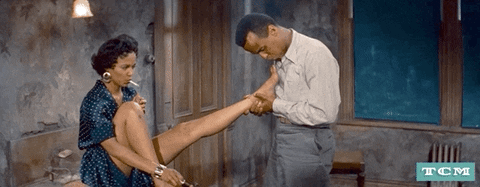
Although she was a vocalist, like much of the cast, Dandridge was not able to meet the demands of the film's operatic hue. Dandridge took great strains to make the dubbed vocals of Marilyn Horne as seamless as possible, mimicking Horne’s breath work.
The NAACP was originally opposed to an all-Black cast as the organization rallied for integration. The controversy of CARMEN JONES truly lay in the lead’s overt sexuality. Carmen obeys her primitive nature, wafting where her emotions lead, and as a result the script was gone over with a fine-tooth comb prior to filming for review by the Hays Office. Dandridge was the first Black woman to appear on the cover of Life magazine, and by the time the film was in production she was viewed by black and white audiences alike (albeit taboo for a white audience) as a bonafied sex symbol. Still, Dandridge faced inevitable racial truths. When once threatening to swim at the all-white hotel which she headlined, suddenly the pool required draining.
Dandridge's performance in CARMEN JONES garnered a Best Actress Oscar nomination, the first for a Black individual. Despite her loss to Grace Kelly, the community saw her nomination alone as a hard earned and long-suffering triumph. After her achievement for CARMEN JONES, demand for her performances grew. Dandridge was booked in illustrious venues including the Empire Room in New York’s Waldorf Astoria Hotel; however, her movie career began to flail on Preminger’s advice to turn down multiple roles offered to her that he perceived as below her Oscar nominee stance. It would be a three-year stint until she would once again return to film, garnering a Golden Globe nomination for PORGY AND BESS (‘59). Over the course of her life, Dandridge would turn to alcohol and prescription medications to fill the void of her failed sometimes abusive relationships and intimate struggles. Her life came to a tragic end at the age of 42 as a result of an overdose.
There was an extraordinary capacity within Dandridge, of which CARMEN JONES only allowed us a glimpse. It is true, Dandridge’s beauty and sex appeal opened doors enjoyed by Black artists to date. It is also true that the racial constraints of the day measurably blocked Dandridge as well as other minority performers of the era. But when I look at Dandridge, I see a woman who despite her pristine beauty, her elegant poise her sexual appeal, or throngs of fans that loved her, much like many of other enviable starlets we can easily name, simply did not love herself enough, and that, is the most unfortunate tragedy of all.
#Dorothy Dandridge#Carmen Jones#Harry Belafonte#all-black#opera#black representation#old hollywood#hollywood Black#TCM#Turner Classic Movies#Constance Cherise
86 notes
·
View notes